München! Oktoberfest, beer, pretzels, and mad kings!
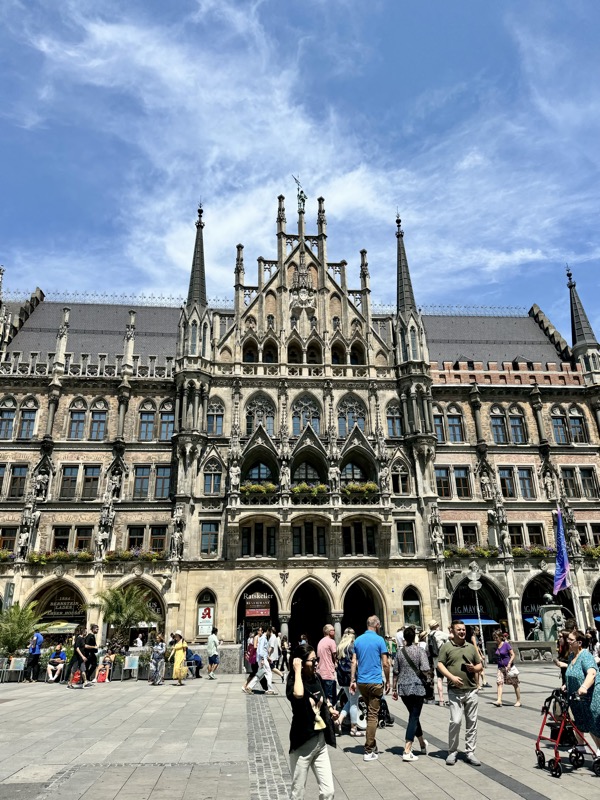
We started off in the Marienplatz just in time to see the massive crowds turning up to watch/listen to the glockenspiel… and it was hot! Even though I know the cafes in the square have sandy lube prices so you can get into some shade to wait for the Thing, I felt today it would be worth it to escape the heat a bit.

Neues Rathaus.
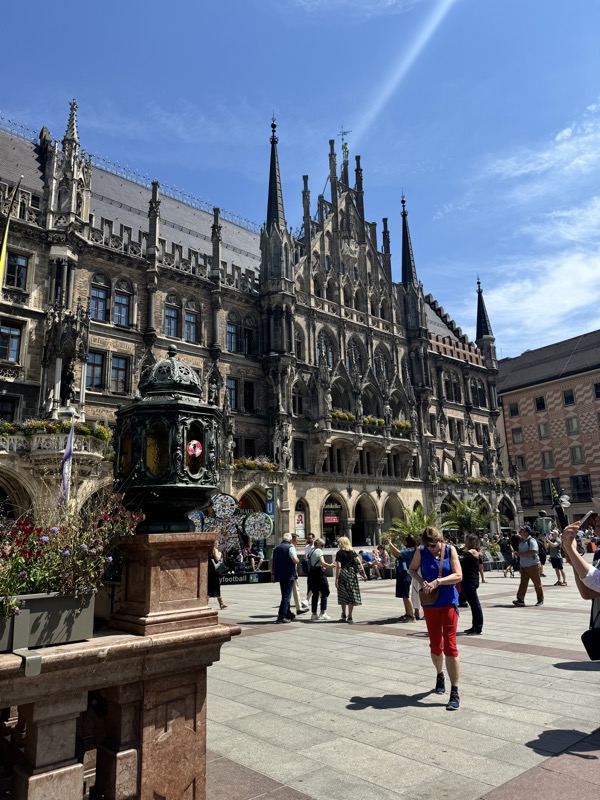
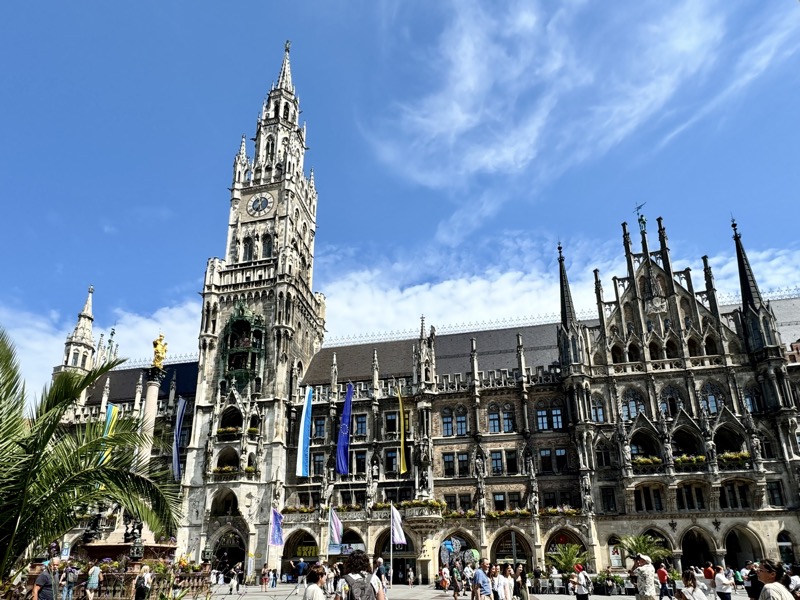
The Nues Rathaus on Marienplatz is where the München mayor, city council and city administration are all headquartered. It was built in several phases starting in 1867 in a neo-Gothic style.
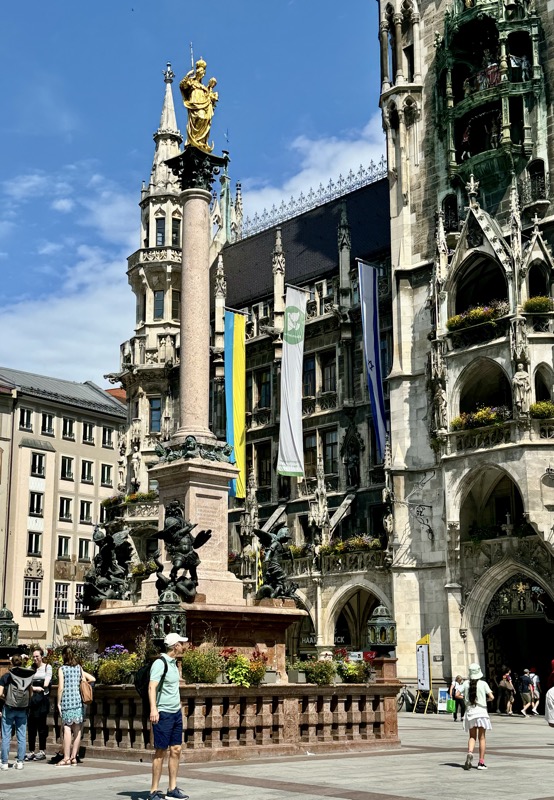
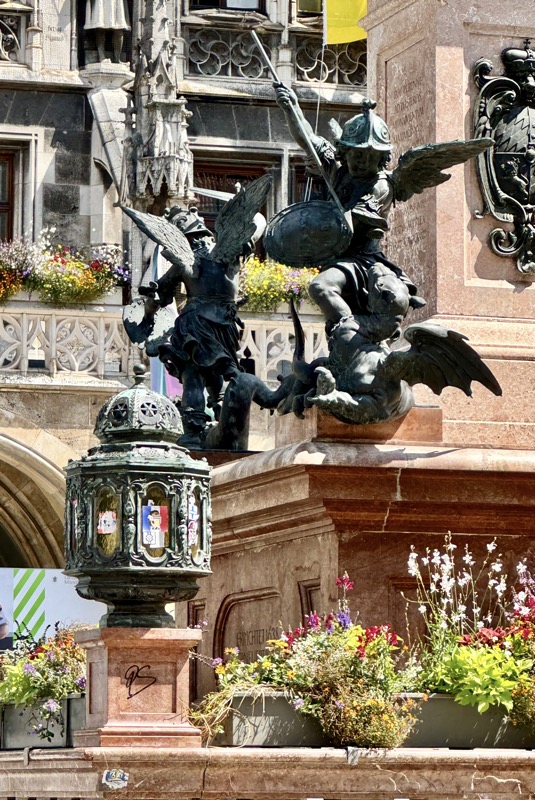
The Rathaus-Glockenspiel is a large mechanical clock located in the Marienplatz Square. It’s known for its life-sized characters which re-enact scenes from Munich’s history twice a day (three times in summer, 11am, 12pm and 5pm). It show little stories of the Marriage of Duke Wilhelm V to Renata of Lorraine in 1568 and the cooper’s dance, aka the Schäfflerstanz which is about the plague of 1517… cheerful, huh? The story goes that the coopers were said to have gone out and danced through the streets encouraging people to leave their homes after being frightened by the plague – sounds familiar… the pandemic is over, come back to the CBD people! The coopers were loyal to the duke and their dancing symbolises loyalty and perseverance. Traditionally the dance is done in Munich every seven years, and was last performed during the Fasching in 2019.
The Glockenspiel has 43 bells, and 32 life-sized figures, and was added tot he Neues Rathaus in 1908, so it’s not as old as it looks. I took a video, but will have to upload it later of find someone else’s video.
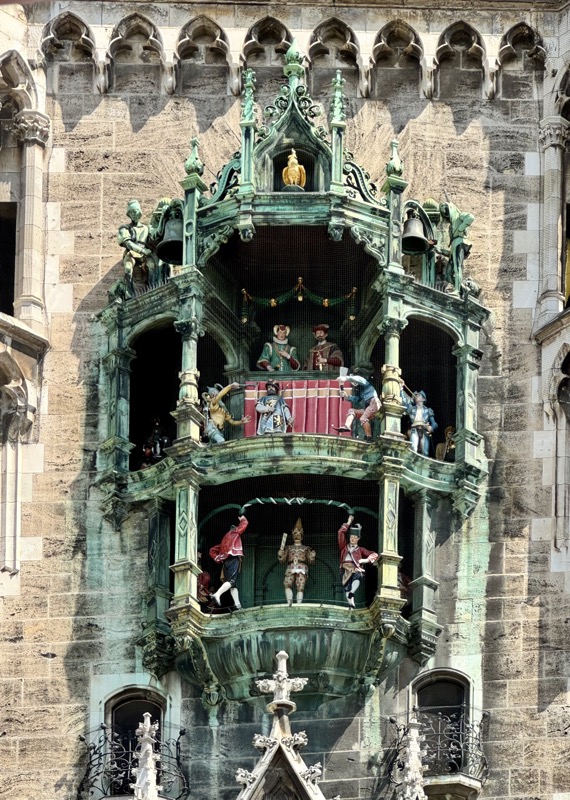
We had about 15 minutes to wait for the glock-glock-glock to go off, so sat down for some over priced Coke Zeros and shared some currywurst.
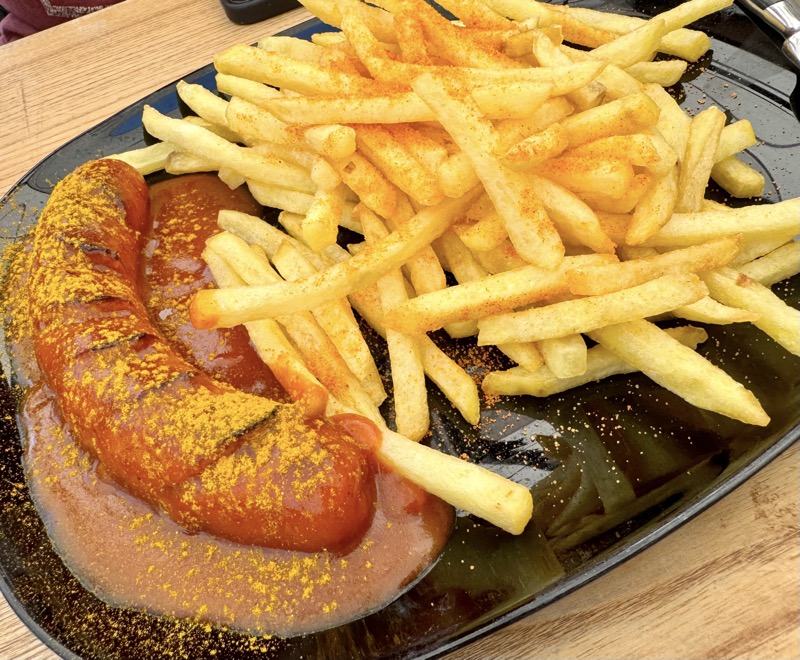
Munich’s Old Town Hall, which now houses a Spielzeug Museum… Toy Museum!
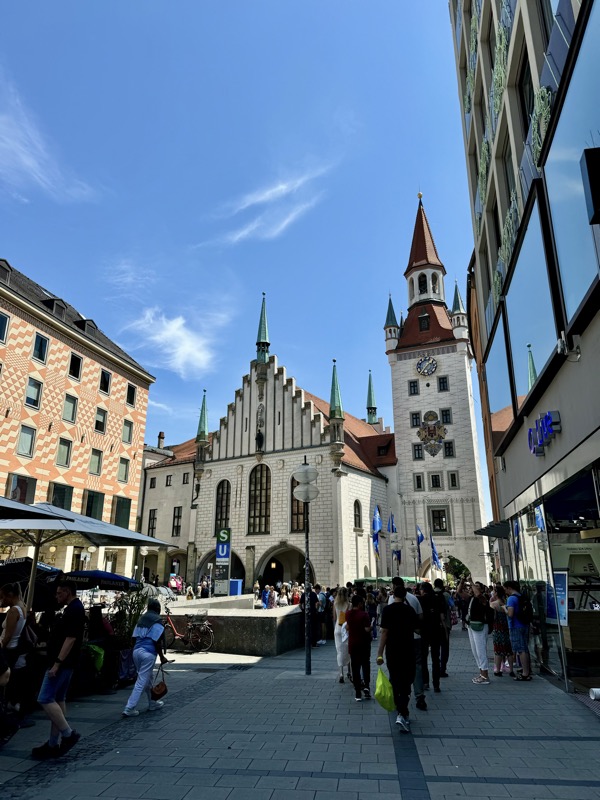
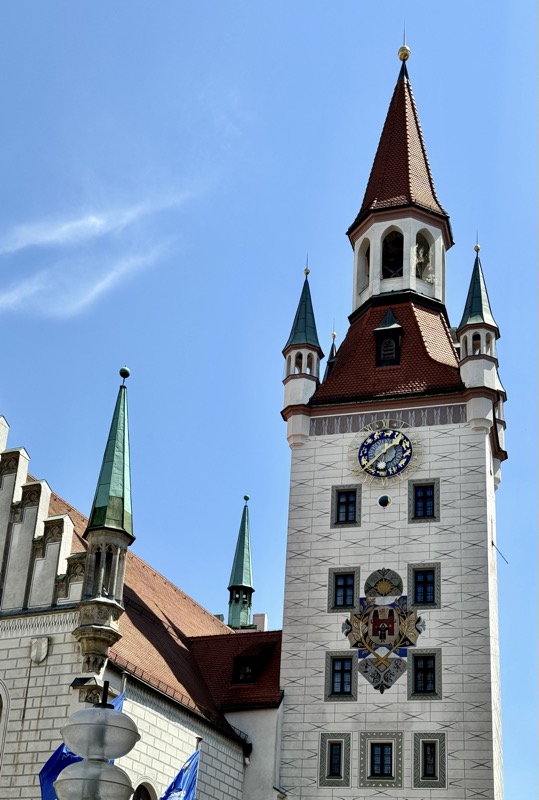
Wiesn-hertz cookies! They’re an Oktoberfest favourite – gingerbread cookies covered in bright coloured icing that often say things like ‘Ich Liebe Dich’.

Did a bit of shopping – might not have been my smartest move to decide to go shopping for a windproof, waterproof snowy weather type jacket while I’m here, but Europe does do it’s cold weather gear so well and I have bought good outer layers in Germany before. I forgot that shopping centre ‘air-conditioning’ here is more of a theory than a practice. :/ It was so hot in the worm! But I did find a good jacket for my next cold weather adventure and because it’s mid-summer, steep discounts, so score!
Right downstairs was a Lego store – with a unique München flavour. Lego pretzels, barmaids, and junge in leiderhosen.
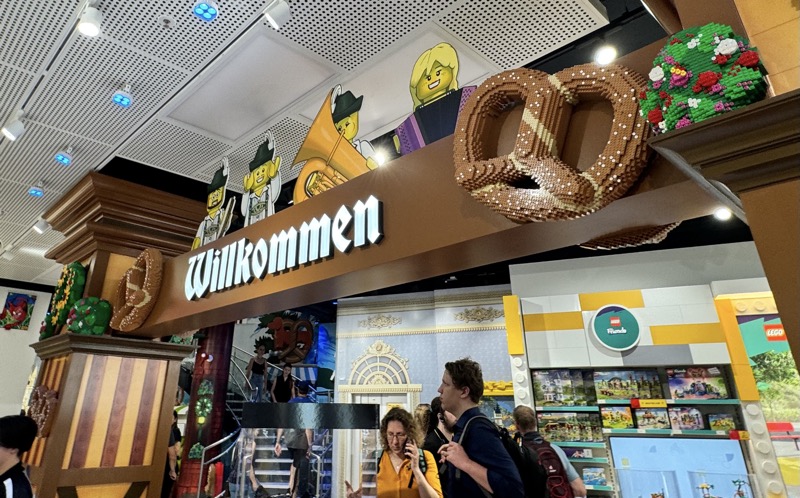
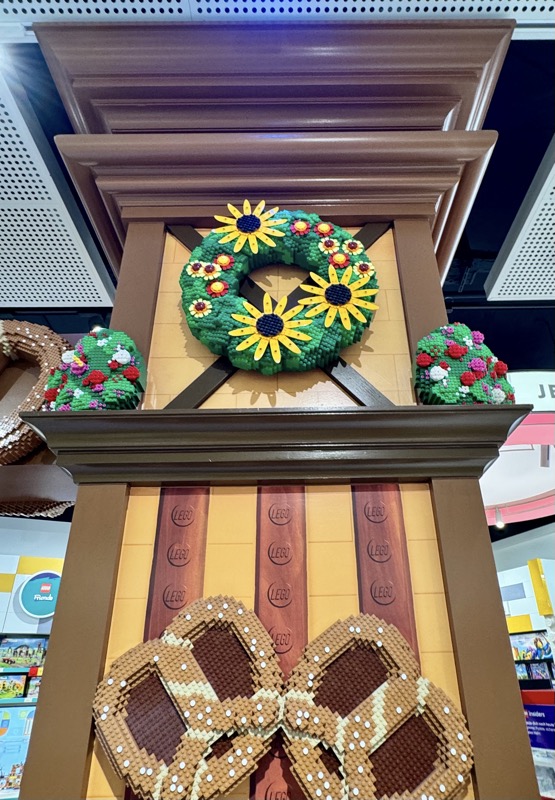
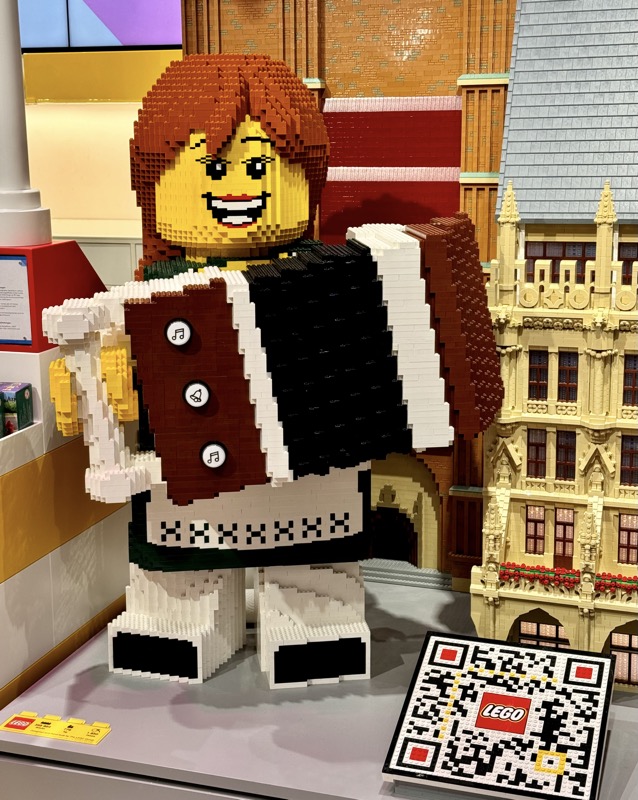
More weisenhertz cookies.
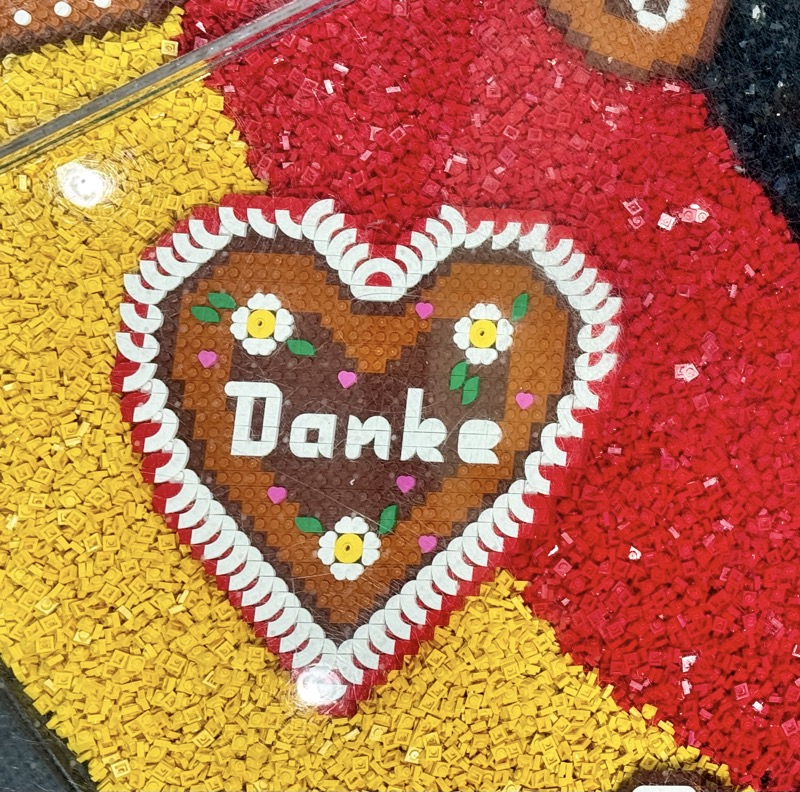
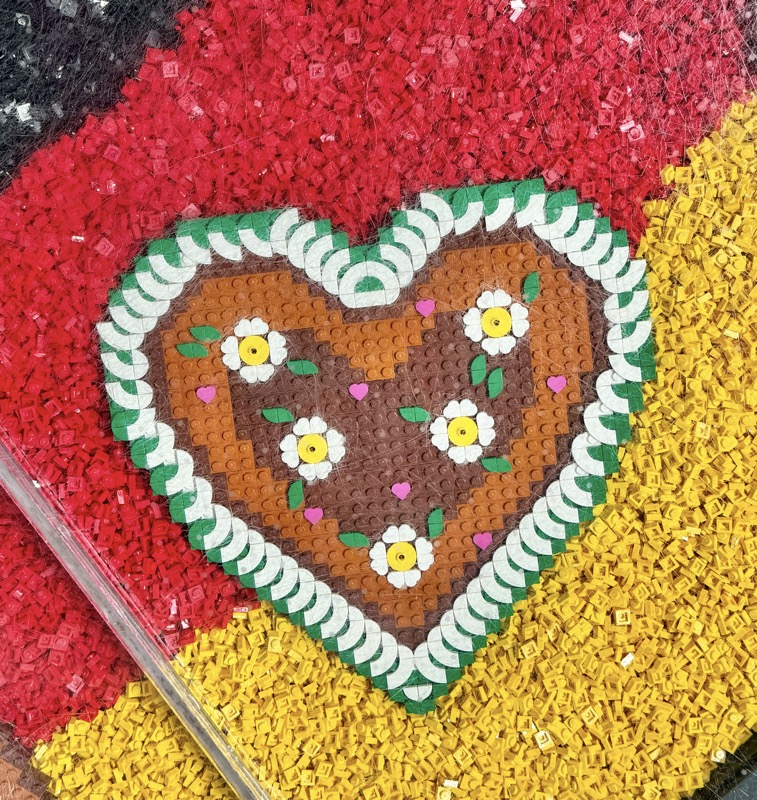

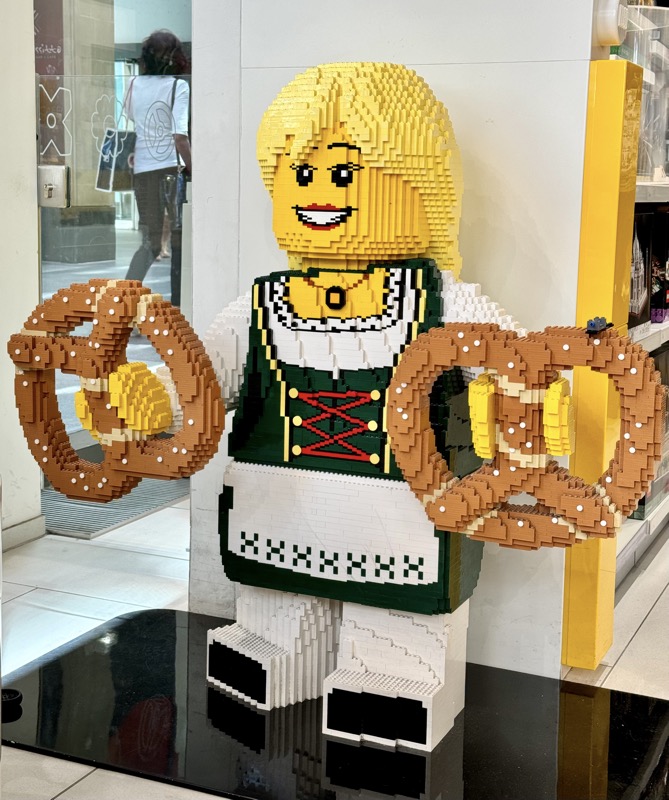
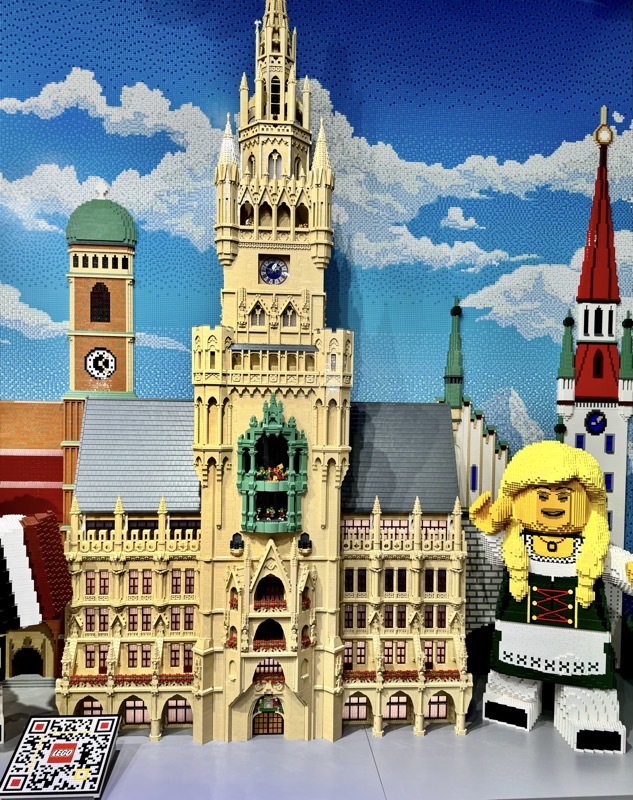
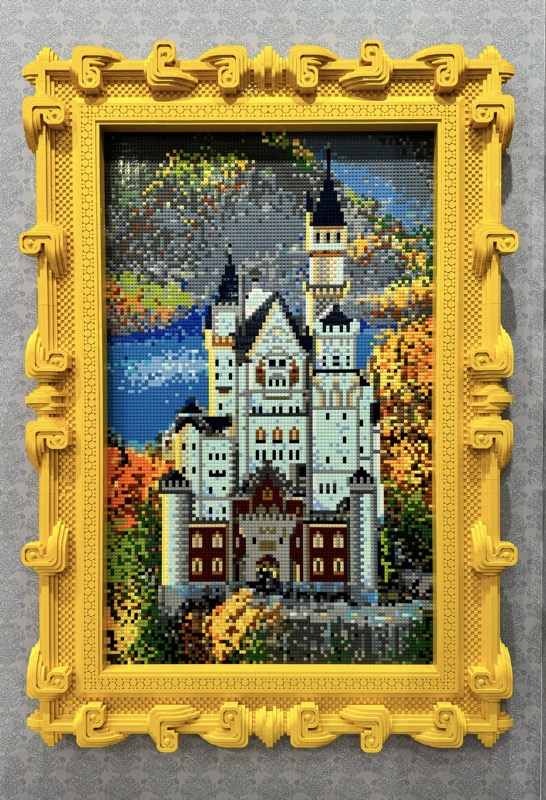
The München Frauenkirche (Cathedral of Our Lady) is late period Gothic church in München’s Altstadt. It is one of the main landmark of Munich and Bavaria. Construction started on the Frauenkirche in the 1460s and it was consecrated in 1494. It is one of the two largest hall churches in the world and one of the largest brick churches north of the Alps. It’s huge – but you know, we’ve just been to Cologne, so we’ve seen bigger. 😉
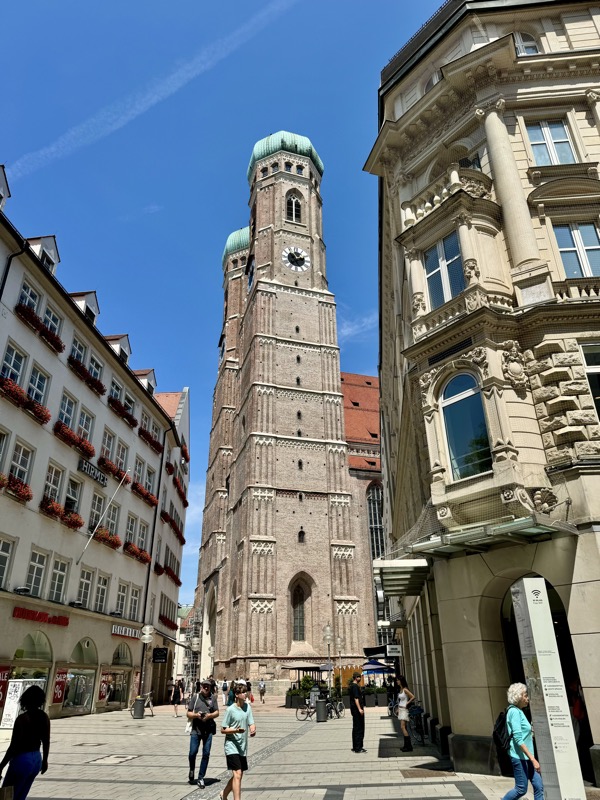
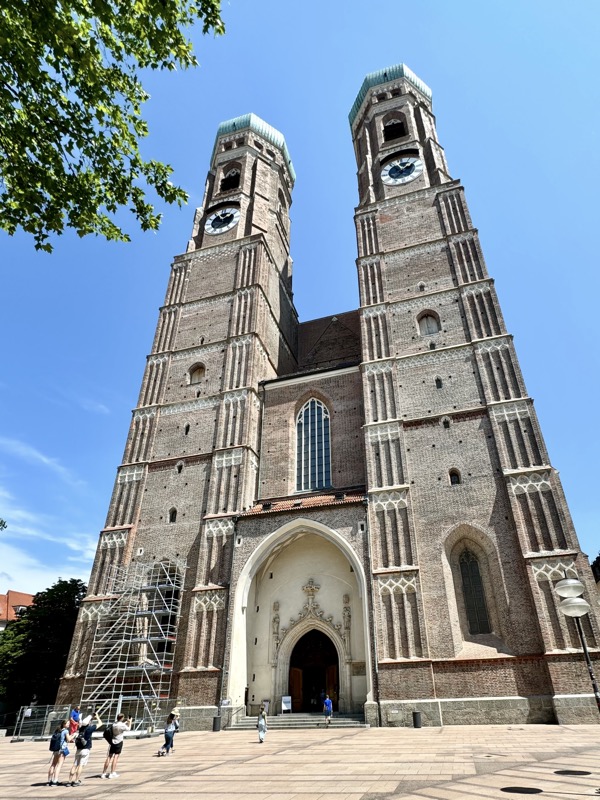
The Devil’s Footprint.
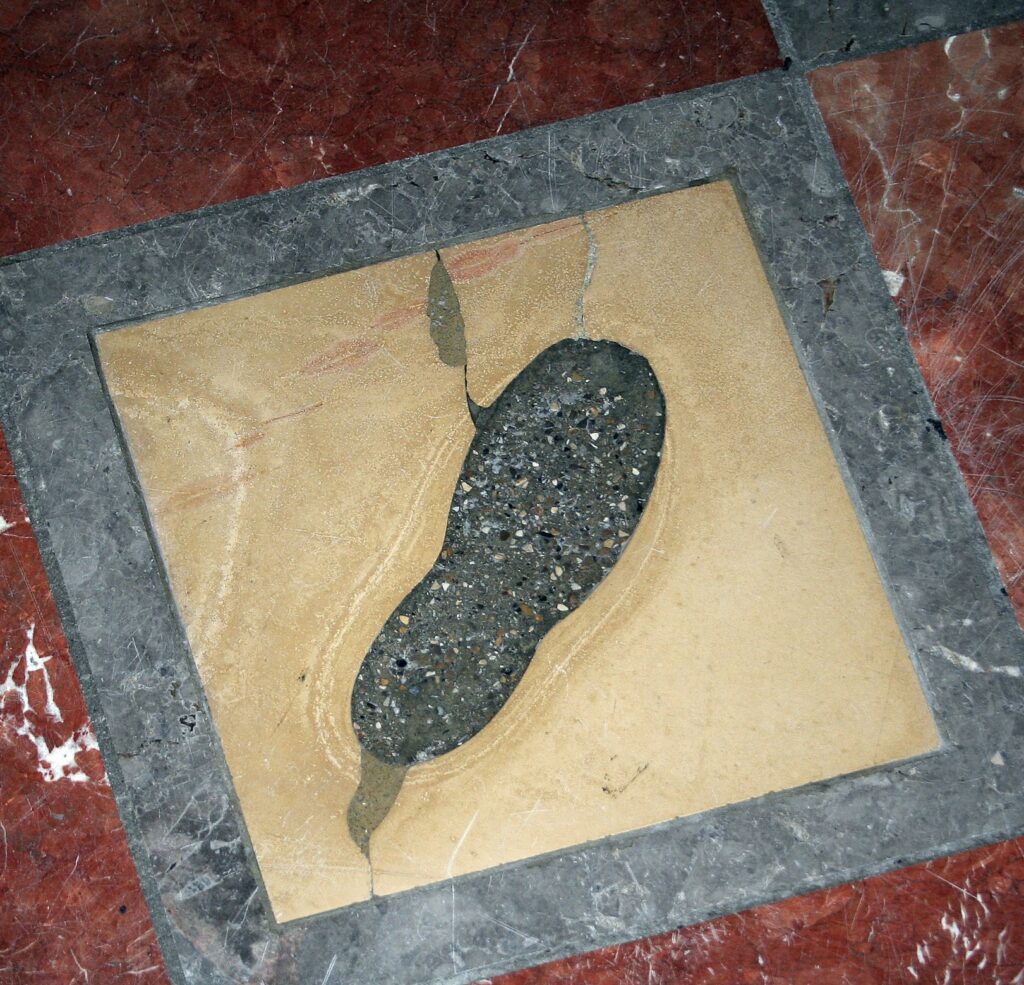
Legend has it that the Devil wanted to destroy this church. He was sickened to see another church being built in Munchen, and so he decided to destroy it, so he sneaked into the entrance hall (apparently only able to do so because the church wasn’t consecrated yet), and he looked around, laughed out loud and stamped the ground hard. He is said to have left this footprint in the pavement and he left the church. The church was finished and consecrated anyway, and when the devil saw people coming to the new church he went into a rage and tried to bring the building down with a violent storm. But it didn’t work, and they say the Devil and his demons still ‘storm’ around the church today. Occam’s Razor would suggest that some lazy person stepped on this tile before it was properly finished and for whatever reason, they decided to use it rather than discard it… but you know, the devil’s footprint story is far more likely.
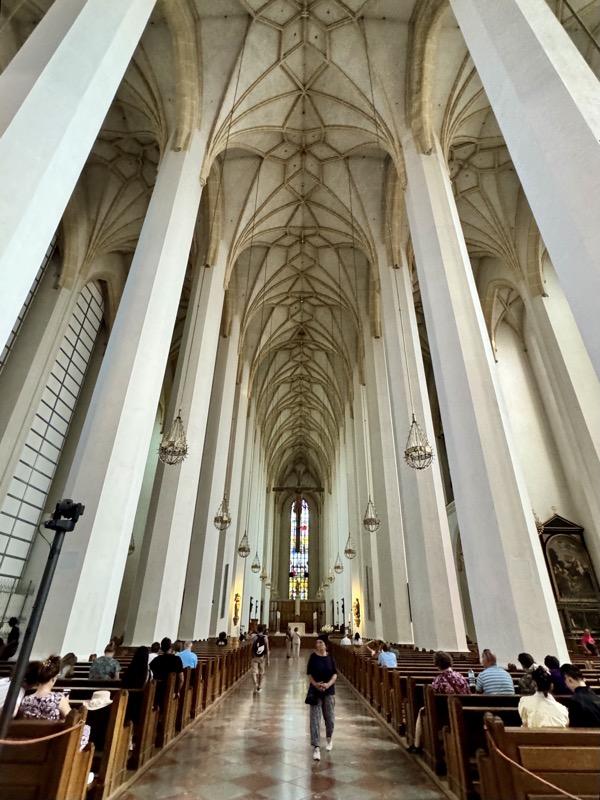
From the entrance of the church, the pillars hide the windows of the church hall, you can’t seem them at all until you enter further into the church.
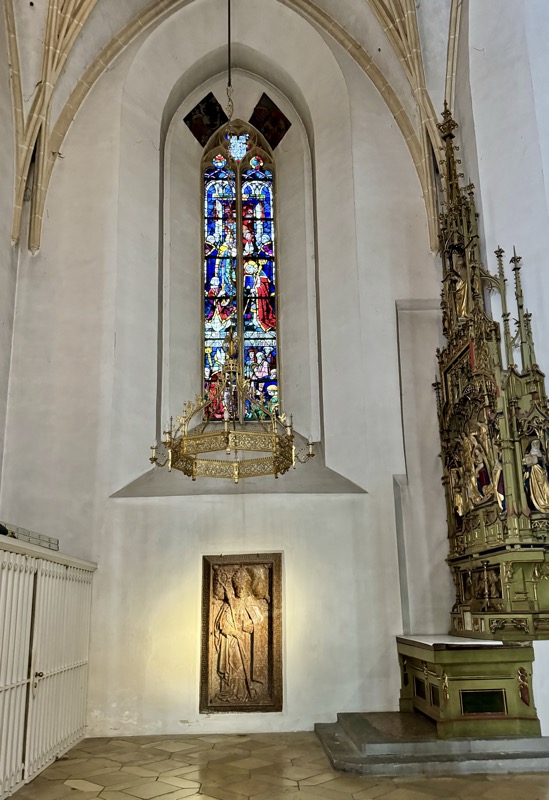
Tomb for Emperor Ludwig the Bavarian, who died in 1347. Designed by Hans Krumpper in 1662. It’s actually a cenotaph or false grave… Old Lugwig’s bones are not in this tomb, they’re in the crypt under the cathedral.
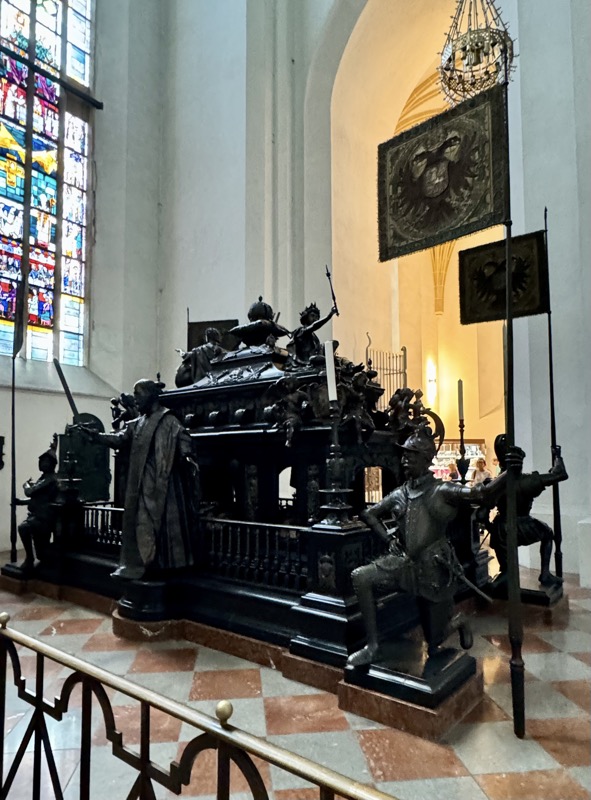
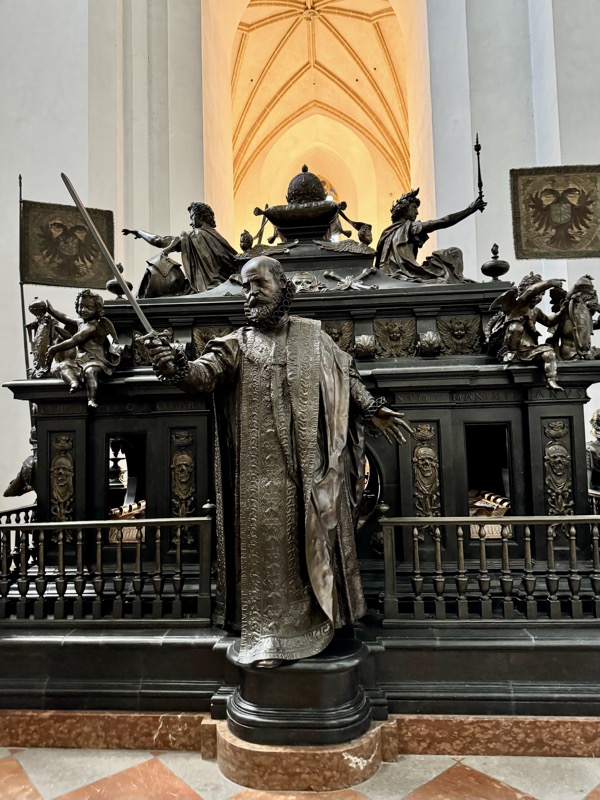
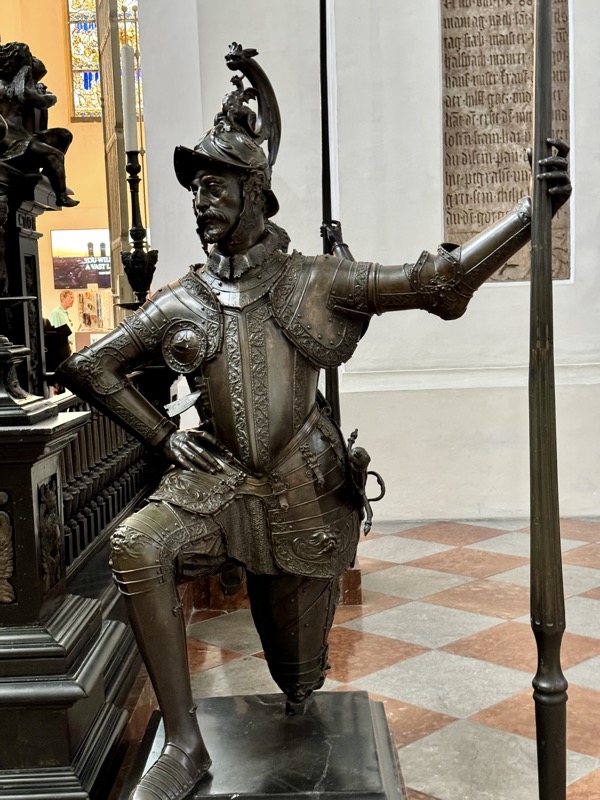
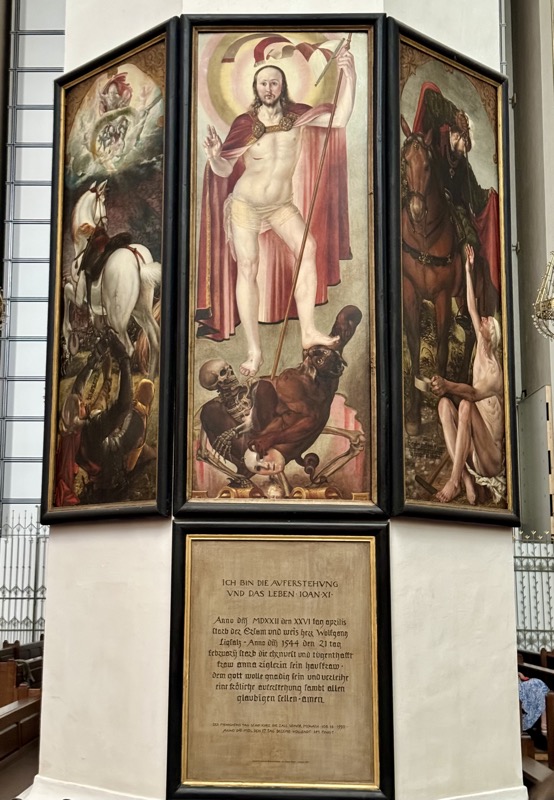
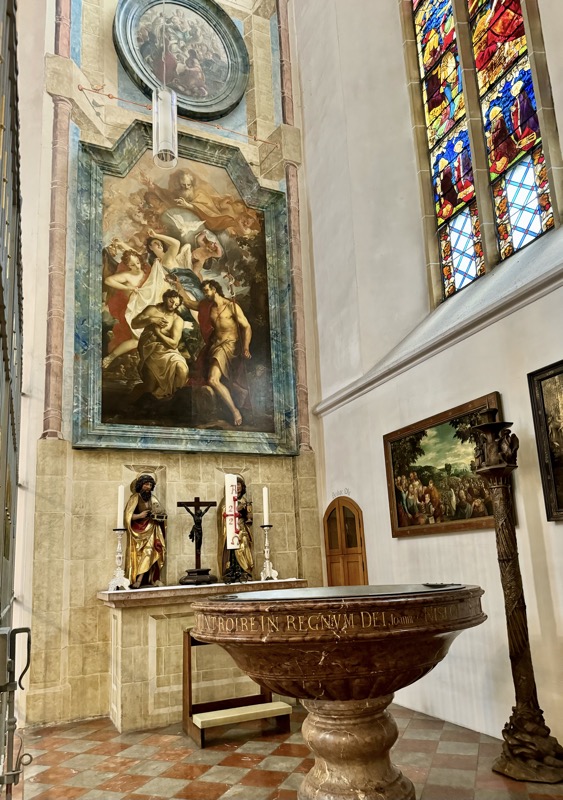
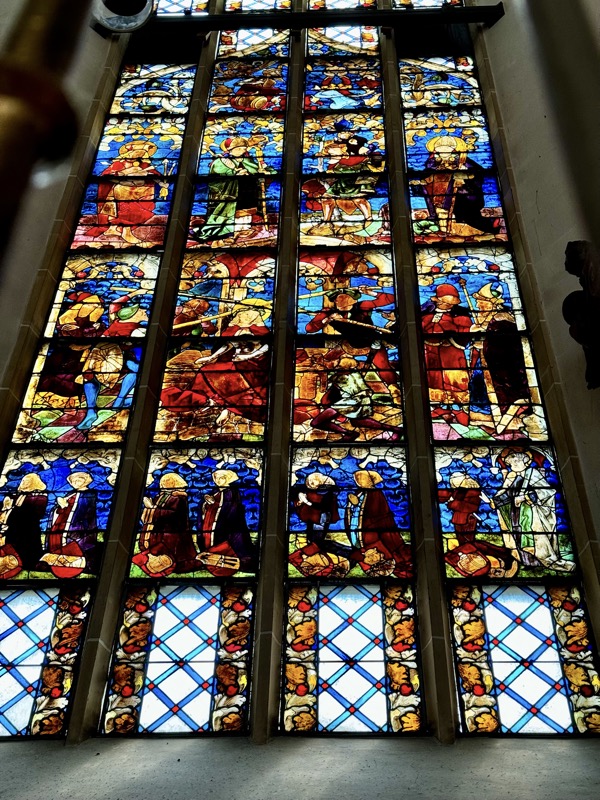
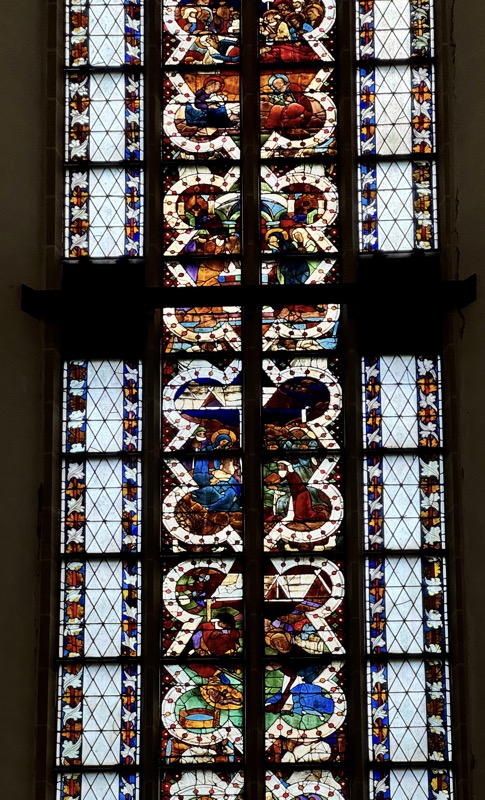
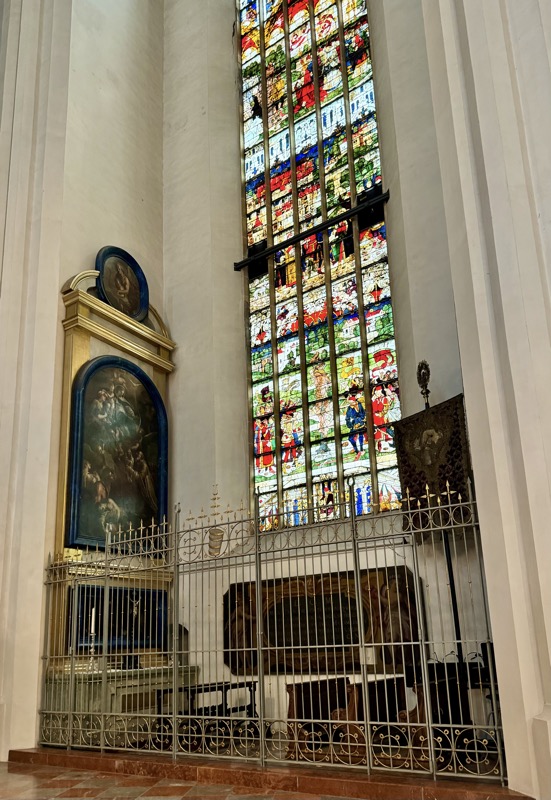
The light in here was really bad and I couldn’t get a good pic – but had to try and record it. This is a medieval altarpiece that has obviously lost its side panel art… and it’s been replaced with (shock, horror!) modern art. Yikes!
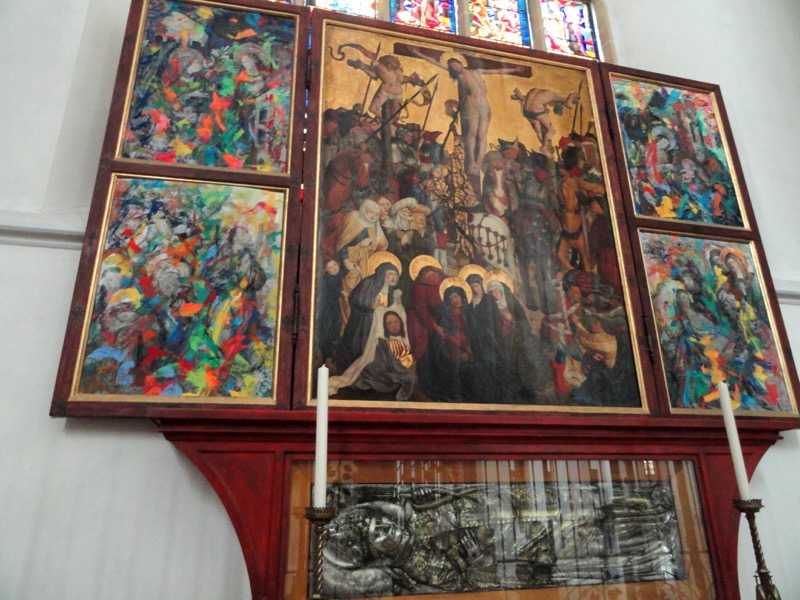
The Munich Madonna of Mercy is modelled after the Altötting Madonna and was donated to the Cathedral by the citizens of Munich in 1659. Carved wood and ivory, garments were embroidered in the 18thC.
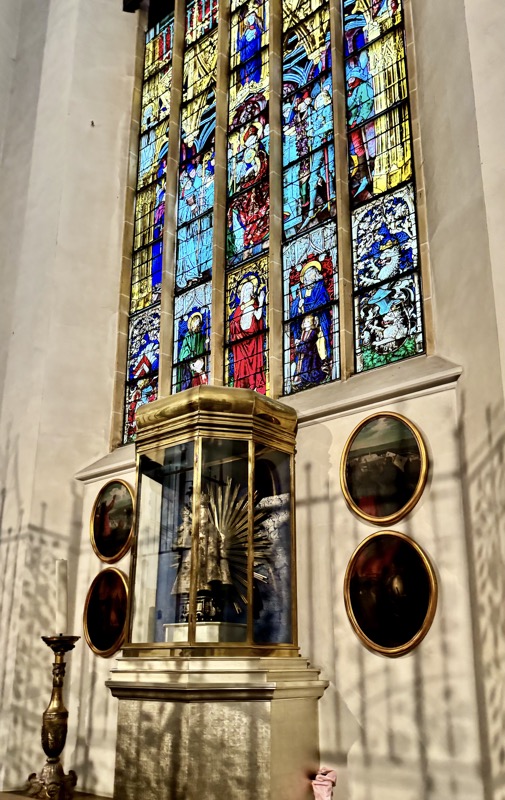
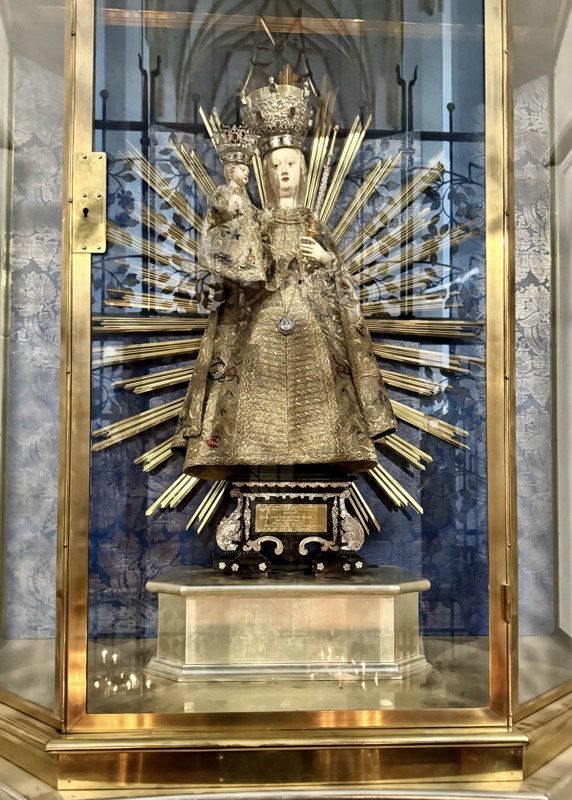
Couldn’t find any information on this amazing donor painting – will have to have a hunt for details later. But what an amazingly pious, and very large, family the donor had!
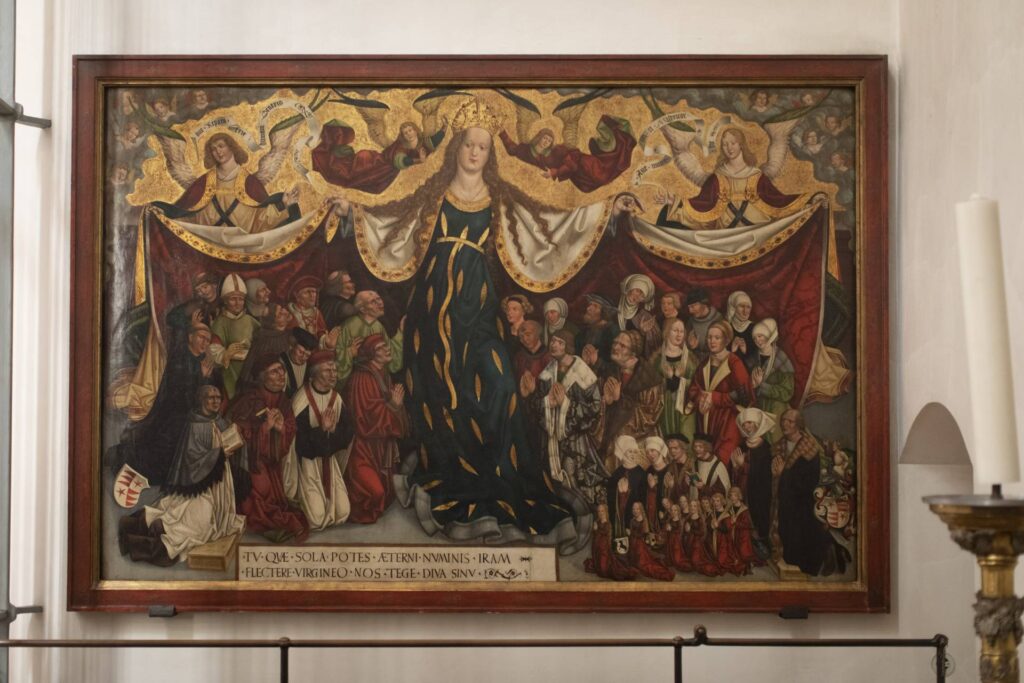
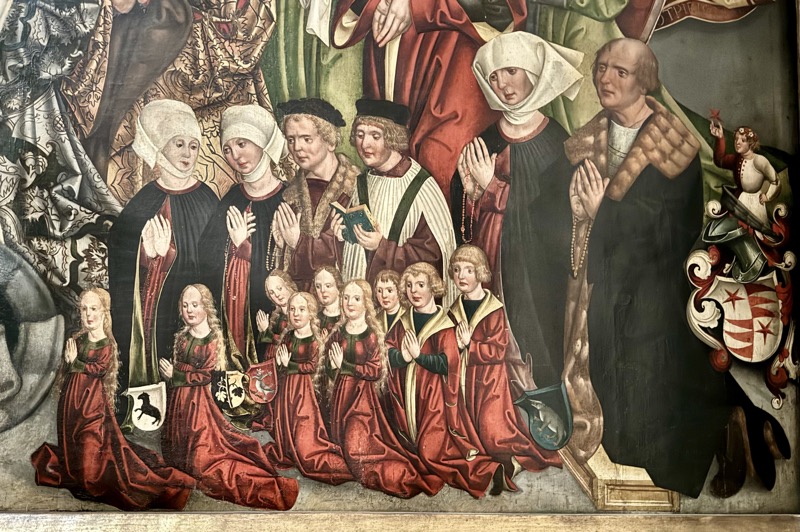
Middle section of the Memmingen, c.1860.
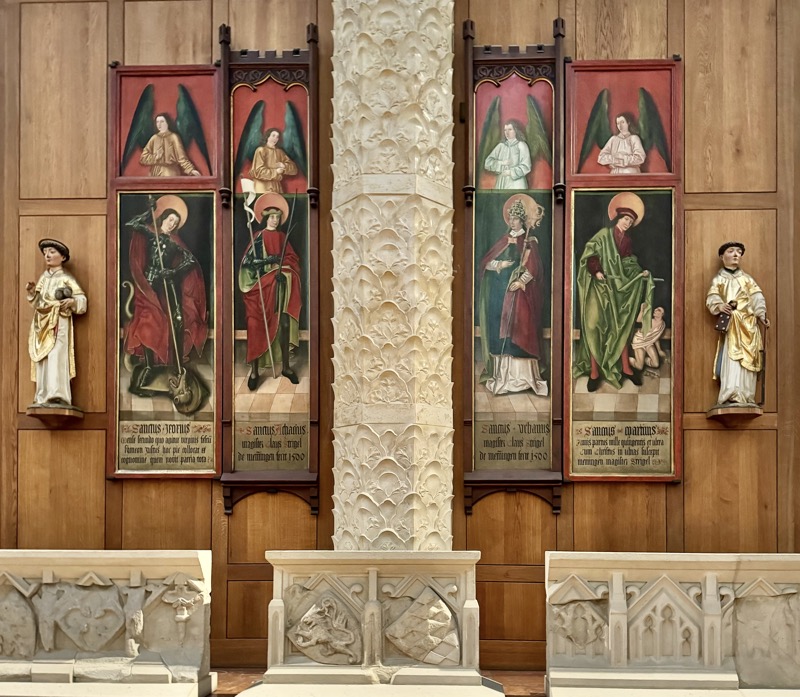
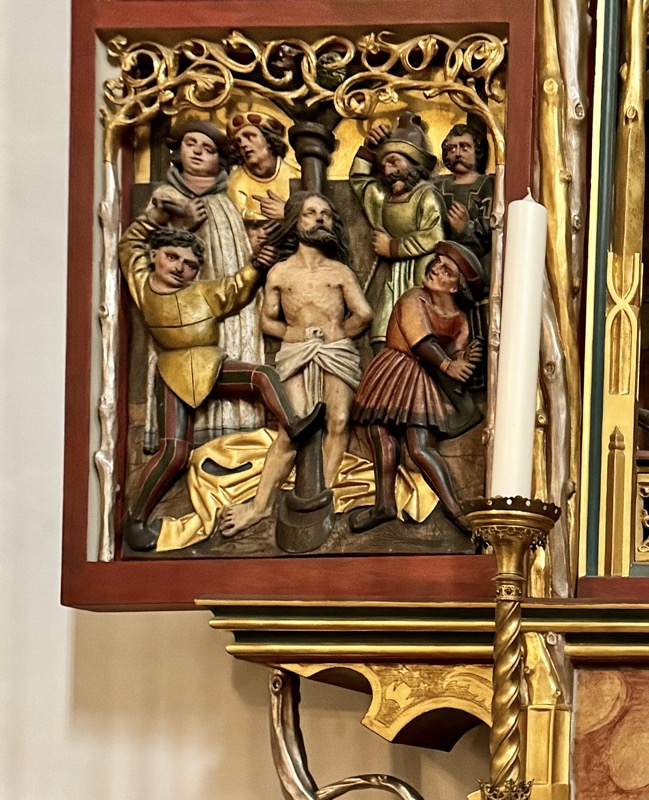
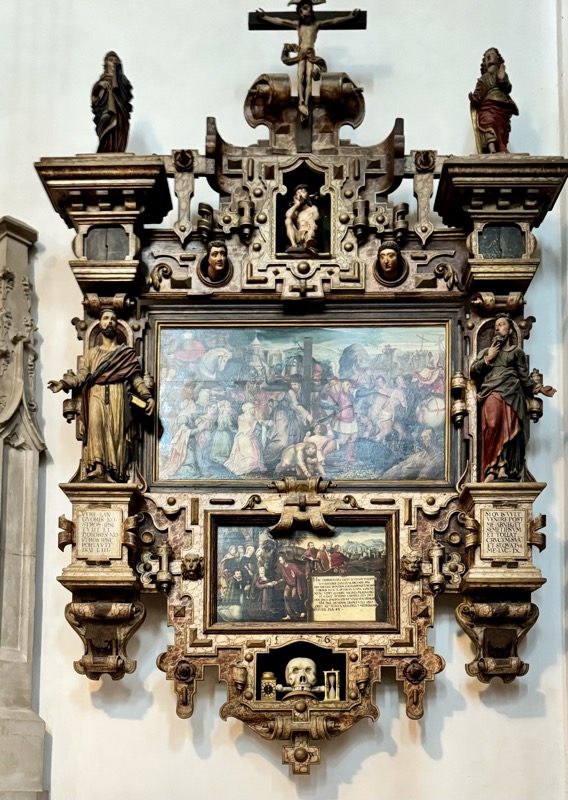
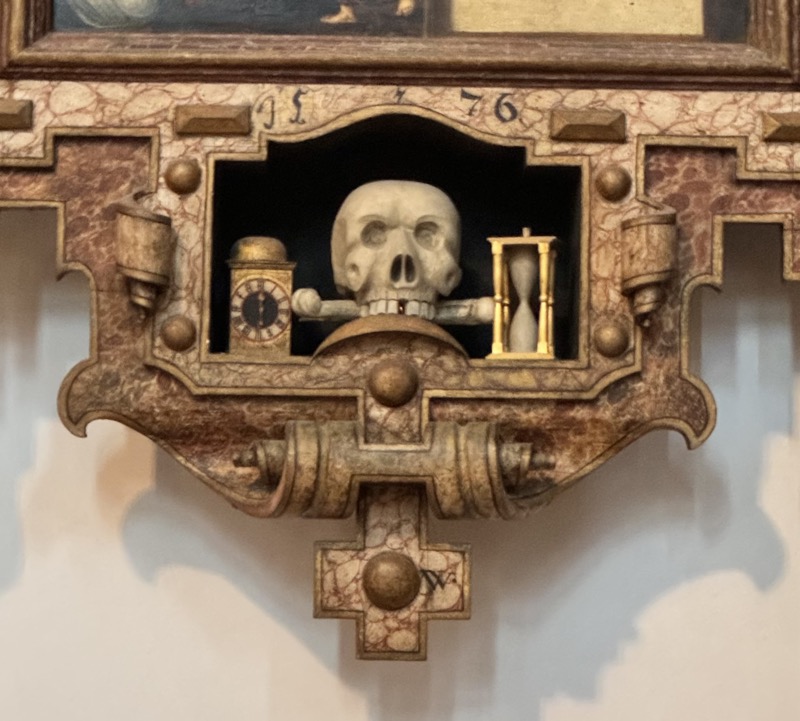
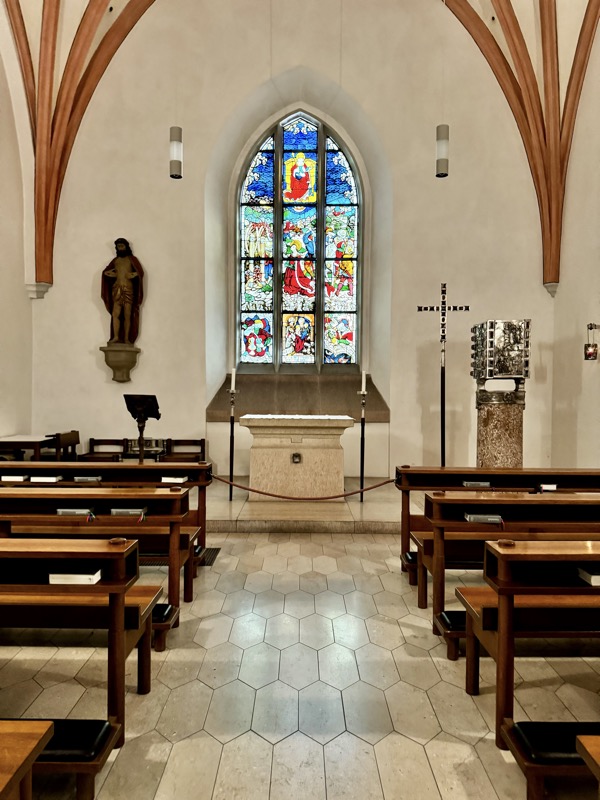
In mid 1995, four very weary Slappers arrived in München after a hectic six weeks or so on the road already… we had every intention of doing the Cathedrals and the Museums and seeing all the things! However when confronted with another hot day walking around another city, we instead made it to the Marienplatz, saw the Glockglockglock, and decided to get out of the heat and away from the people and (of all things) we decided to go hide in a dark, quiet air-conditioned space and went to a fucking cinema to see a movie and maybe see the Pinakothek after! Yes… extended travel will do that do you. Eventually you pike; though now we call it, ‘having a Sea Day’. The movie we chose? Forrest Gump.
We bought our tickets, confirmed like, three times, that it was in English and not dubbed. Picked up some popcorn and some drinks and head into the cool dark cinema. We watched the 20 mins of ads (all in German) and looked forward to a couple of hours of cool, dark, escapism. Now, I don’t know if anyone remembers the introduction to Forrest Gump, but it has a long panning scene following a floating feather that falls at Forrest’s feet…
And when Forrest leaned down and picked up that feather, and in something that was definitely NOT Tom Hanks’ voice, he said:
”Hallo. Mein Name ist Forrest. Forrest Gump. Willst du eine Praline? Davon könnte ich ungefähr Millionen essen. Meine Mama hat immer gesagt, das Leben sei wie eine Schachtel Pralinen.”
Well… FUCK. We burst out laughing and went out to see if we could get our money back, being just povo-backpackers in those days. I’ve never forgotten it – we tried! We never made it to the Altes Pinakothek in München that day. Until today, nearly 30 years later… thought I’d go find out whether we missed much
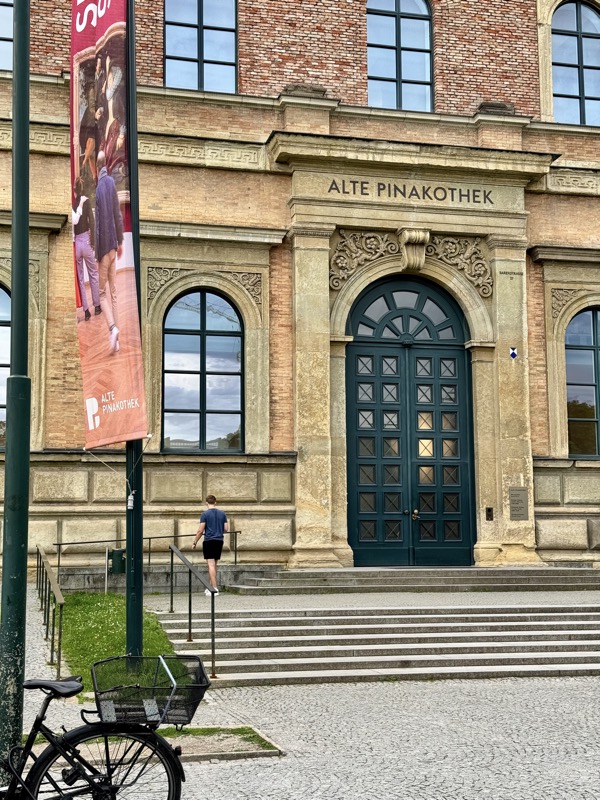
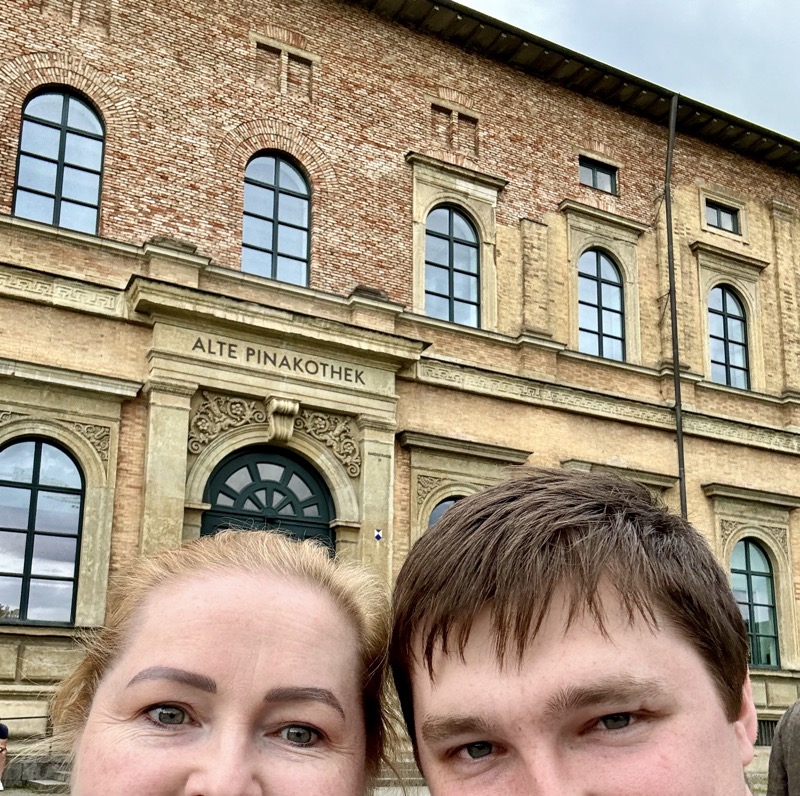
Muchner Biergarten – Max Liebermann, 1884.
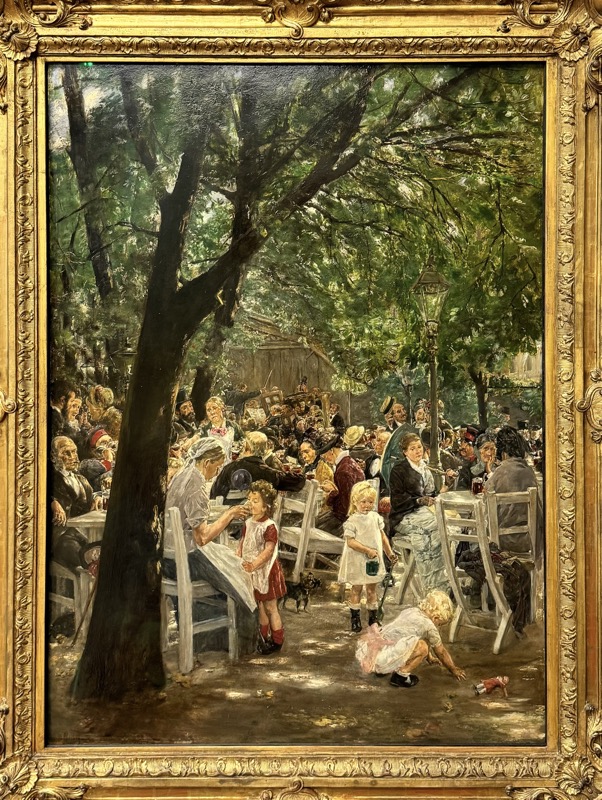
The Cathedral – Odilon Redan, 1914.
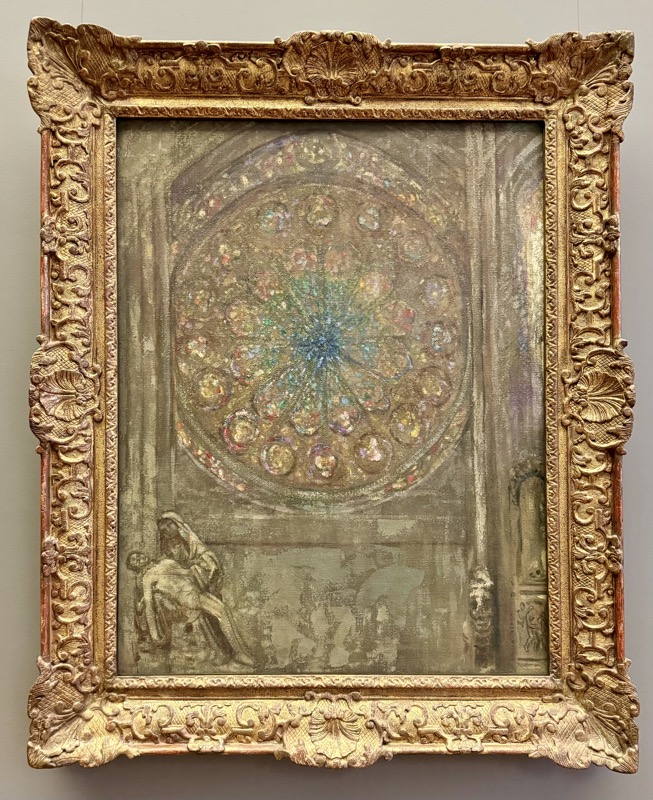
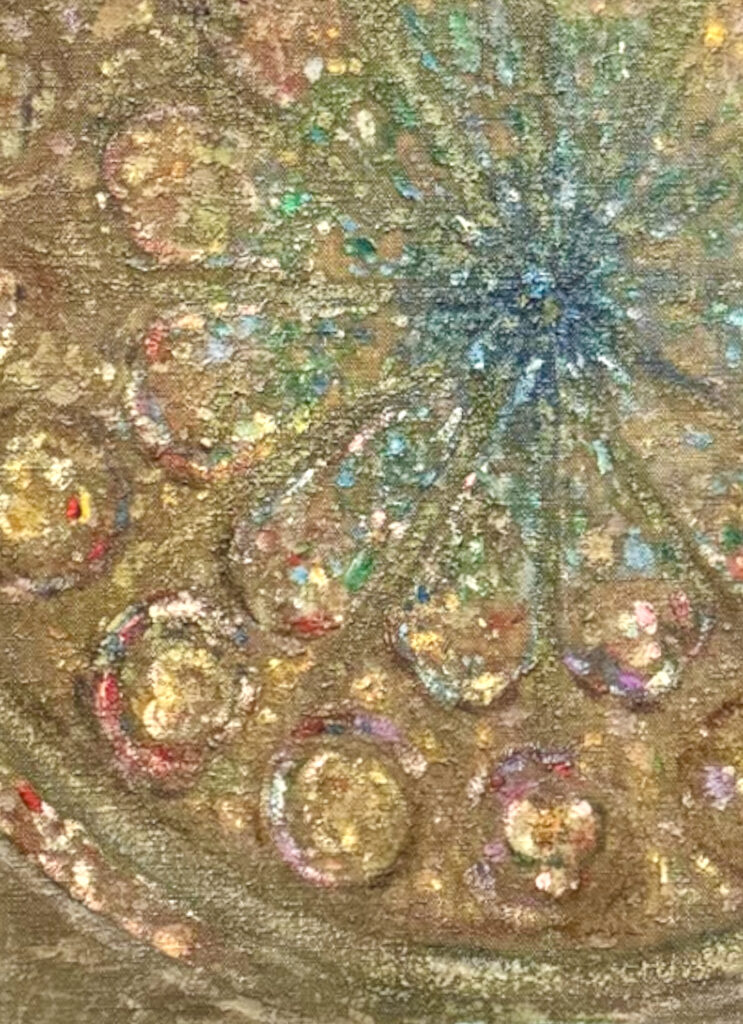
Margaret Stanborough-Wittgenstein, Gustav Klimt, 1905.
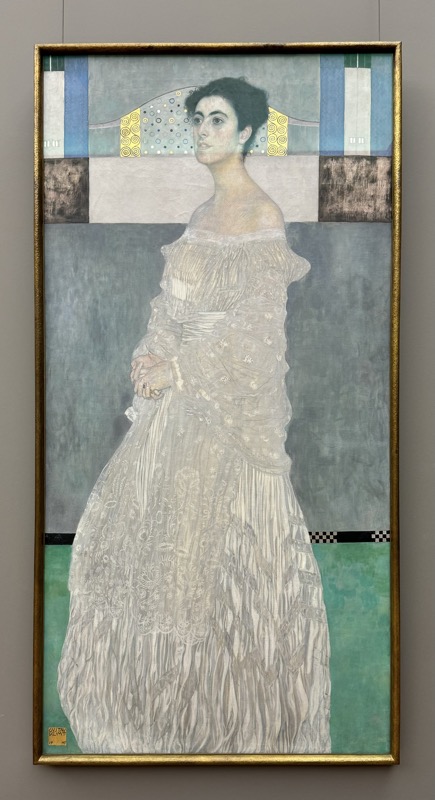
Four Breton Women – Paul Gauguin, 1886.
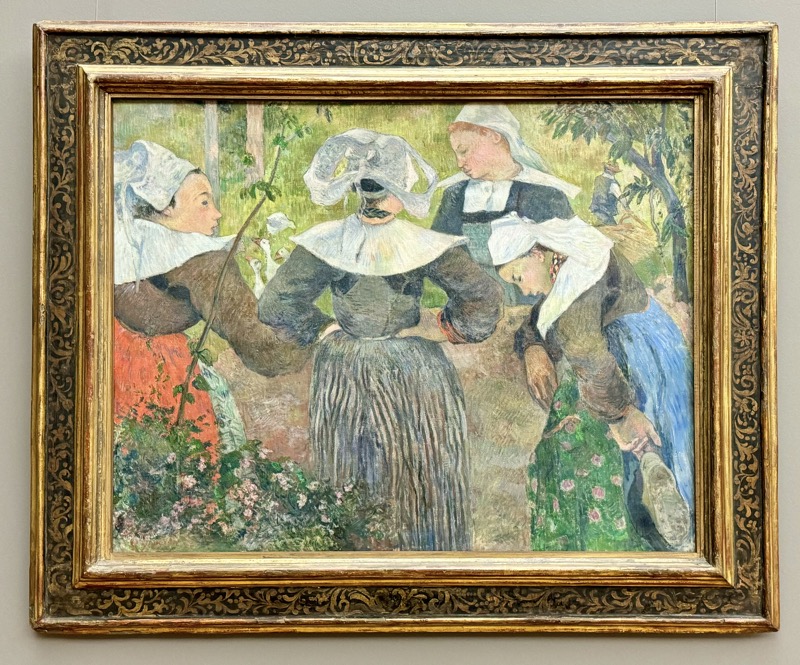
Water Lilies – Claude Monet, c1915.
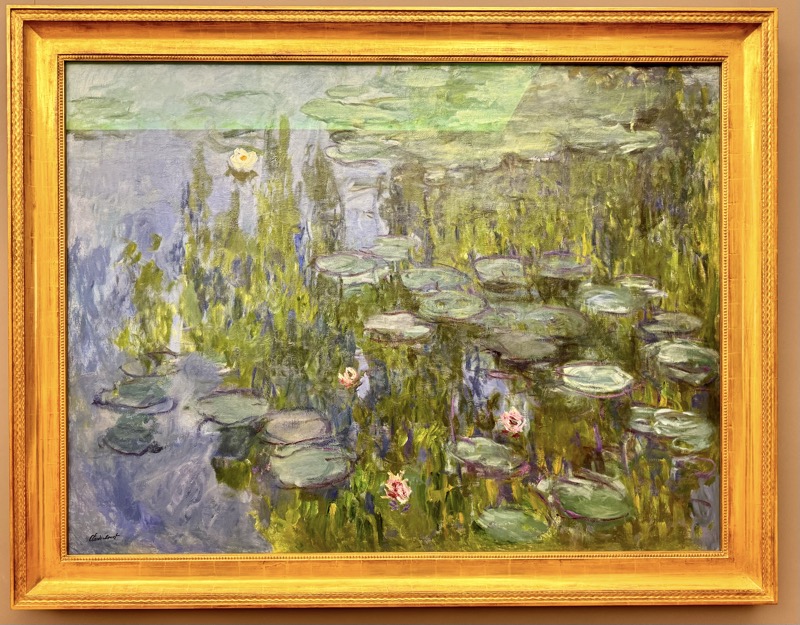
Nativity – Te tamari no atua – Paul Gauguin, 1896.
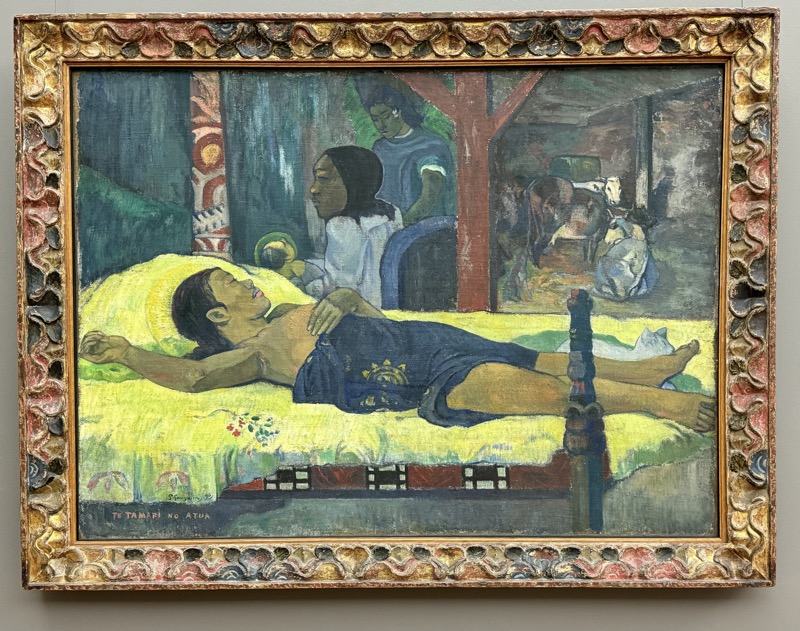
View of Arles – Vincent van Gogh, 1889.
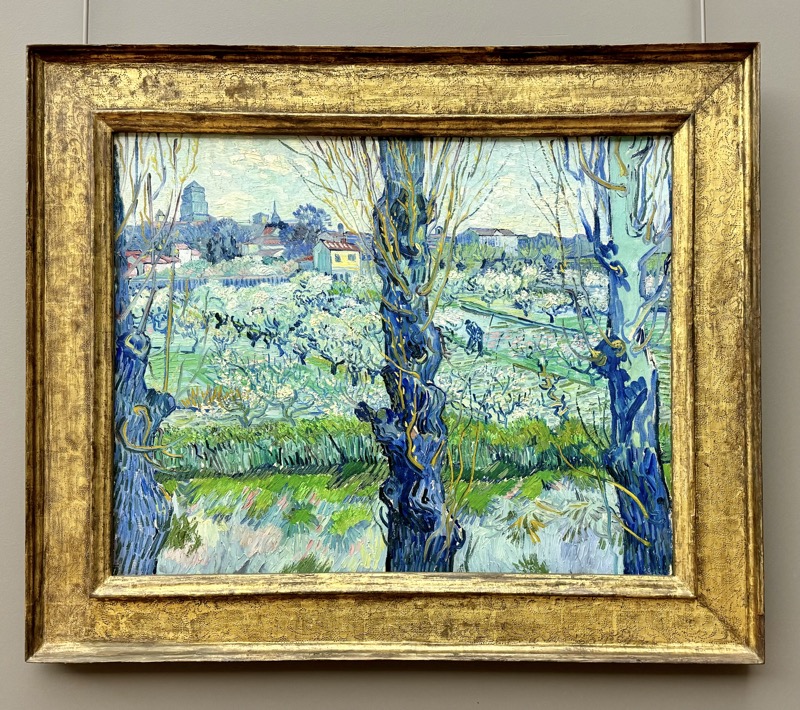
Sunflowers – Vincent Van Gogh, c.1888.
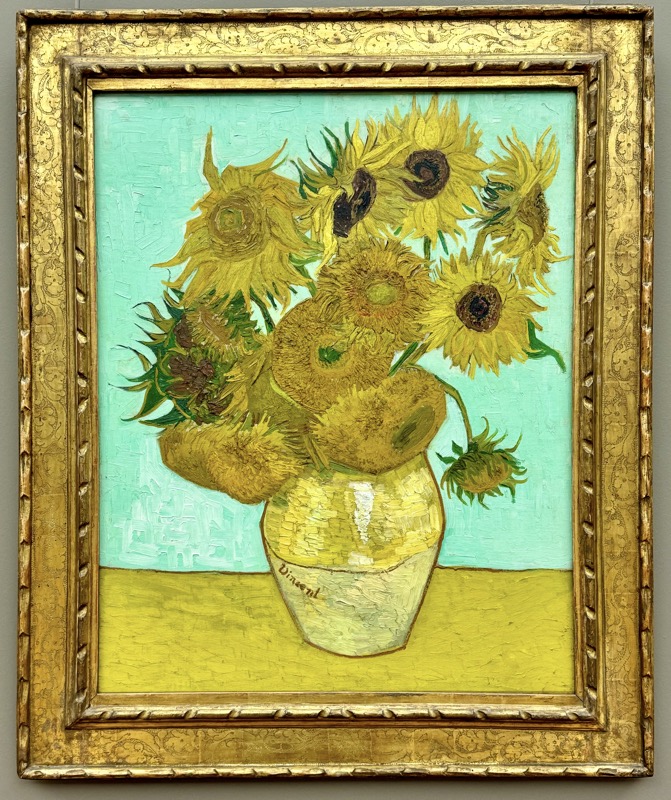
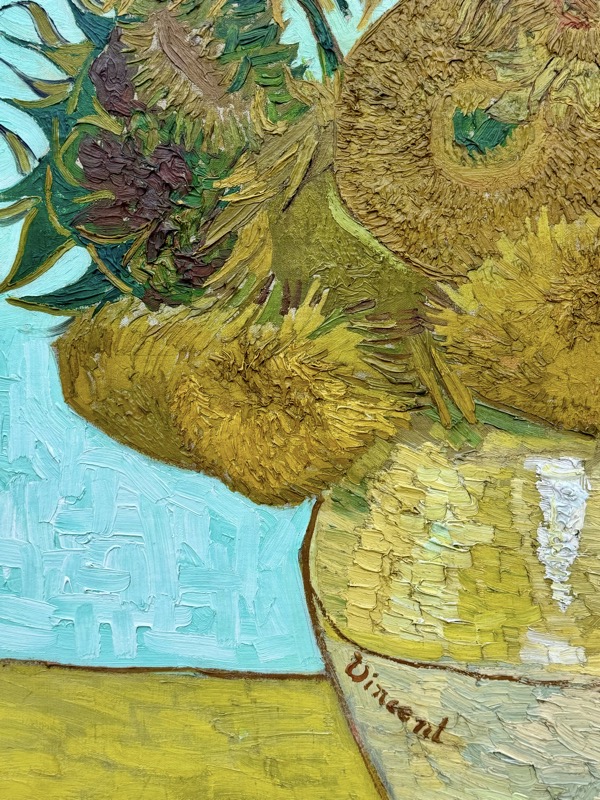
First room… strong start from the Pinakothek! 🙂
Large Fish Market – Jan Brueghel, c.1603.
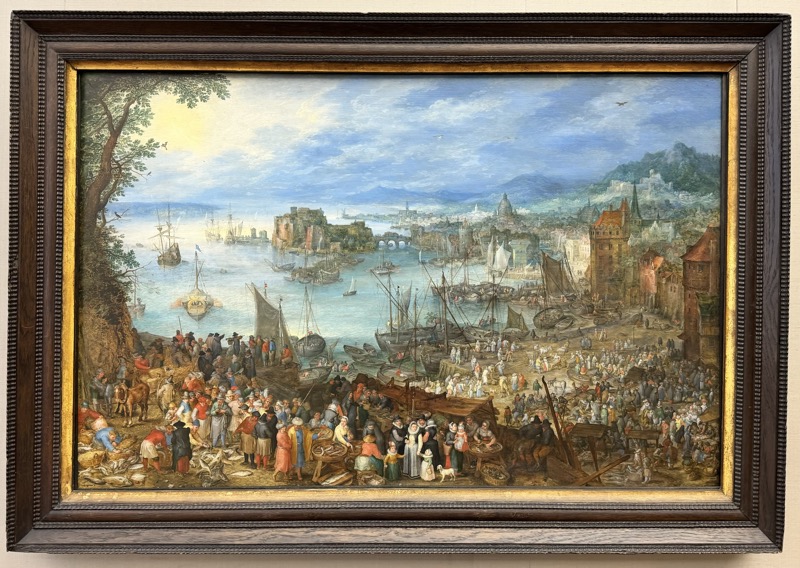
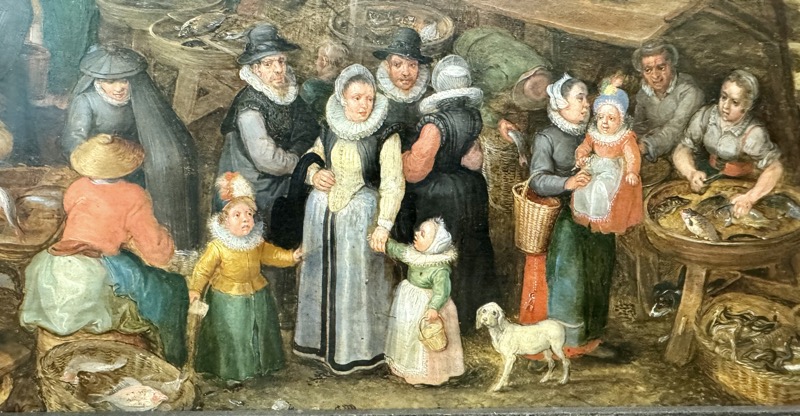
Mary with Child and St Margaret and Dorothea – Bartholomäus Bruny the Elder, c.1515-20.
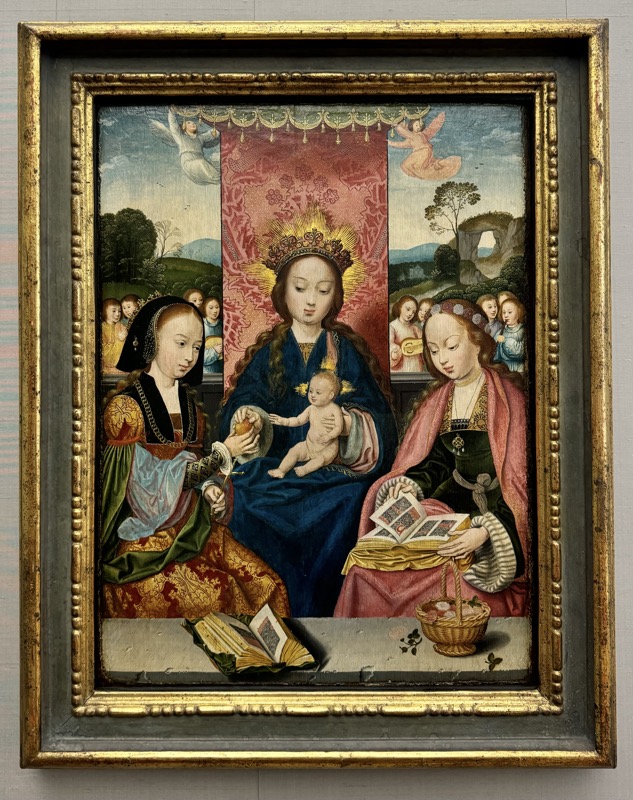
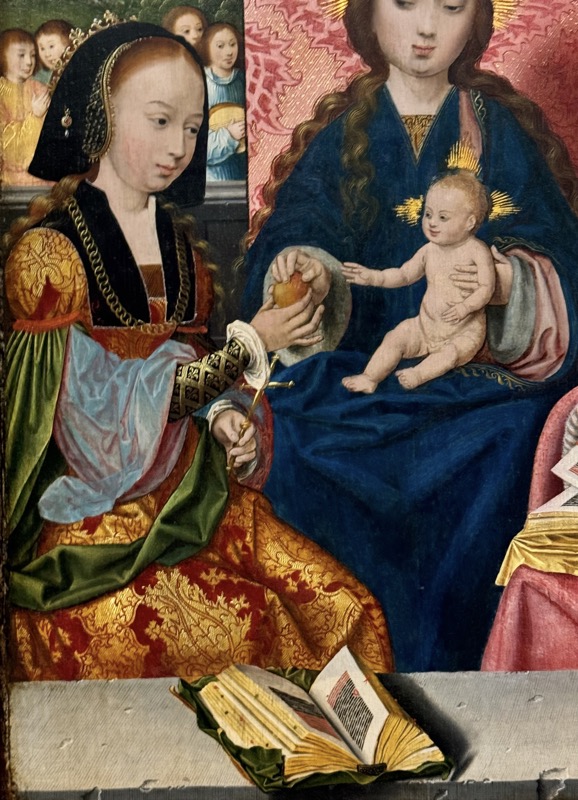
The Annunciation – Fra Carnevale, c.1445.
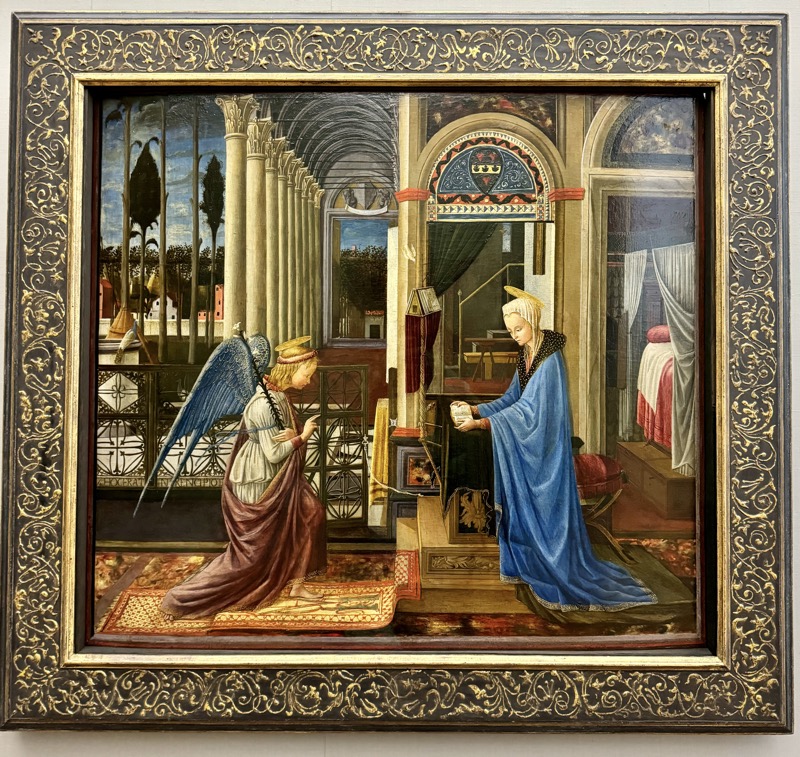
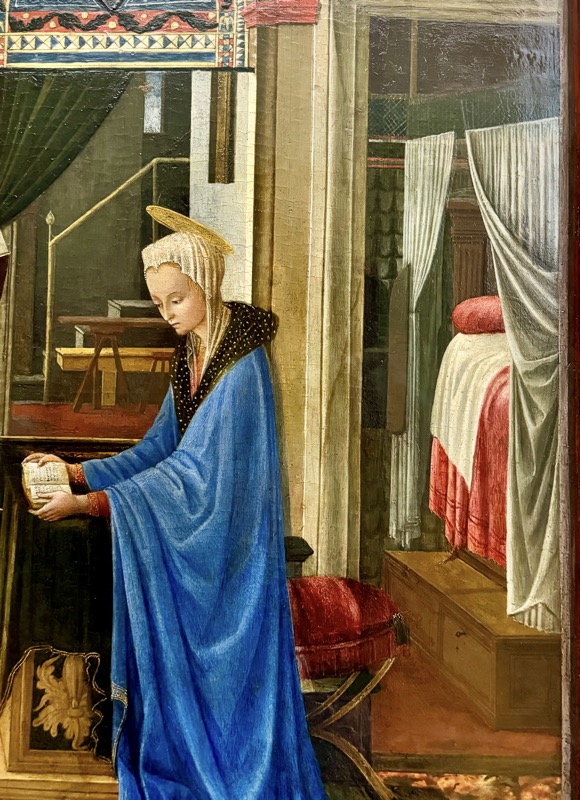
LEFT: St Nicholas with a Benefactor – Agnolotti Gaddi, c.1393/96
RIGHT: St Julian – Agnolotti Gaddi, c.1393/96.
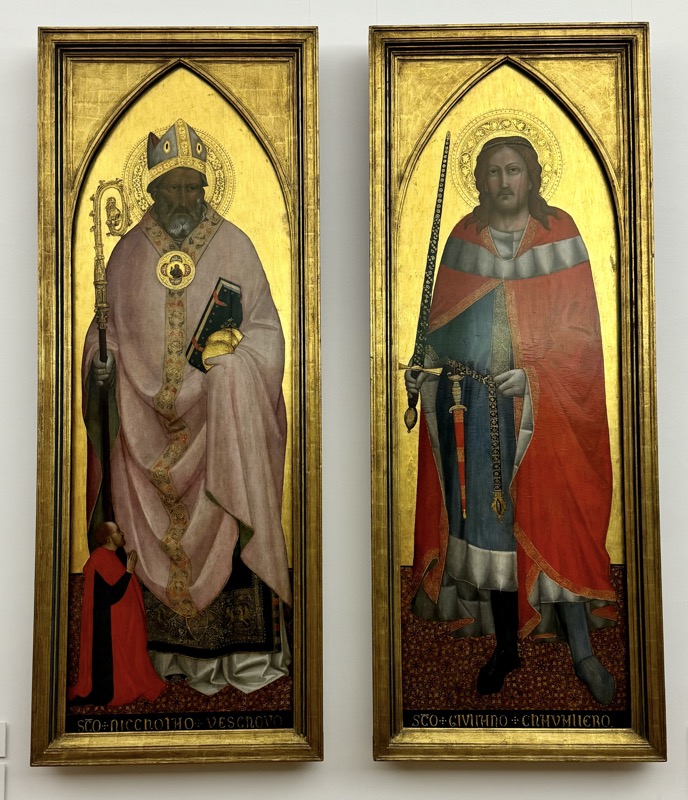
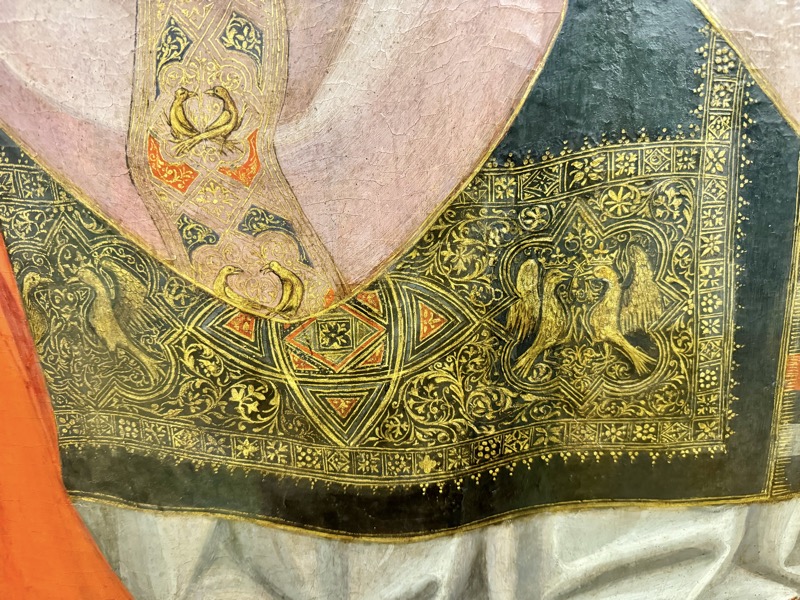
Paumgartner Altarpiece – Albrecht Dürer, c.1498/1504… another original as copied at the AD musuem.
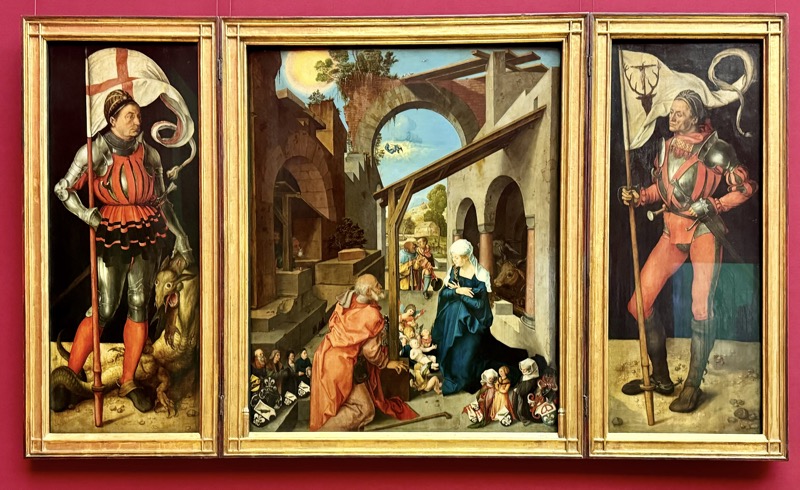
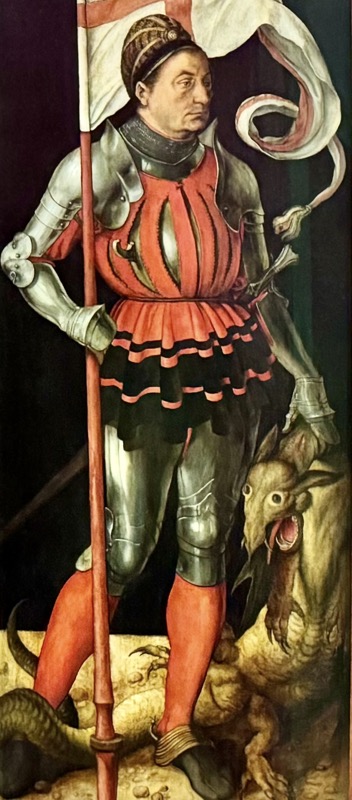
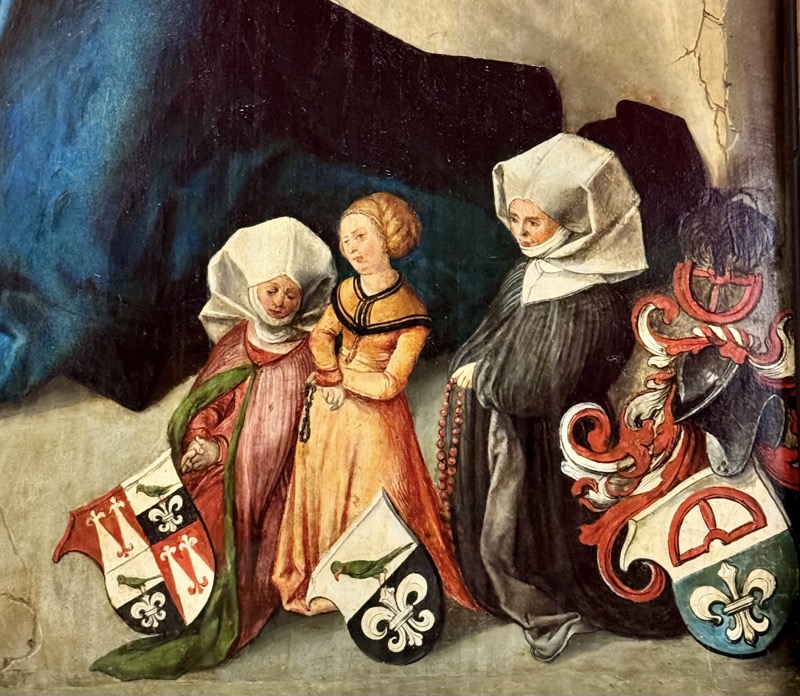
Madonna of the Carnation – Leonardo da Vinci, c.1475.
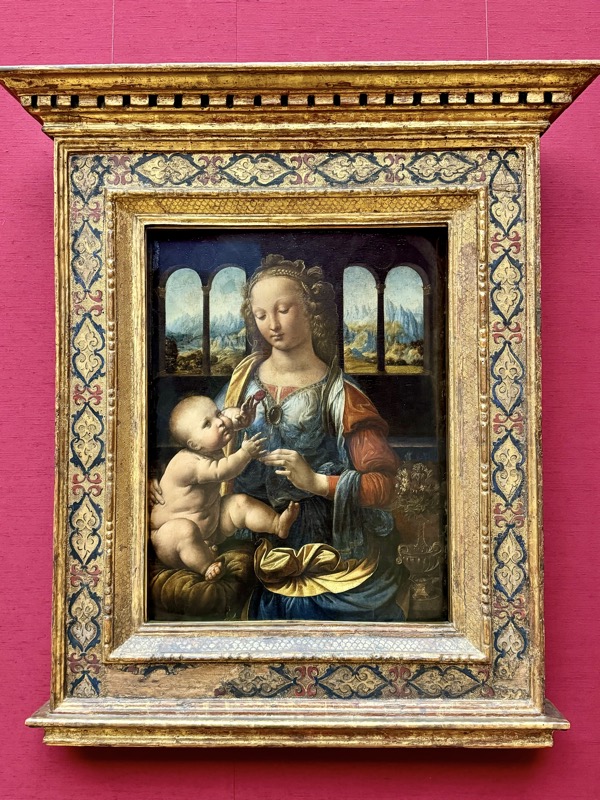
The Lamentation – Sandro Botticelli, c.1490/95.
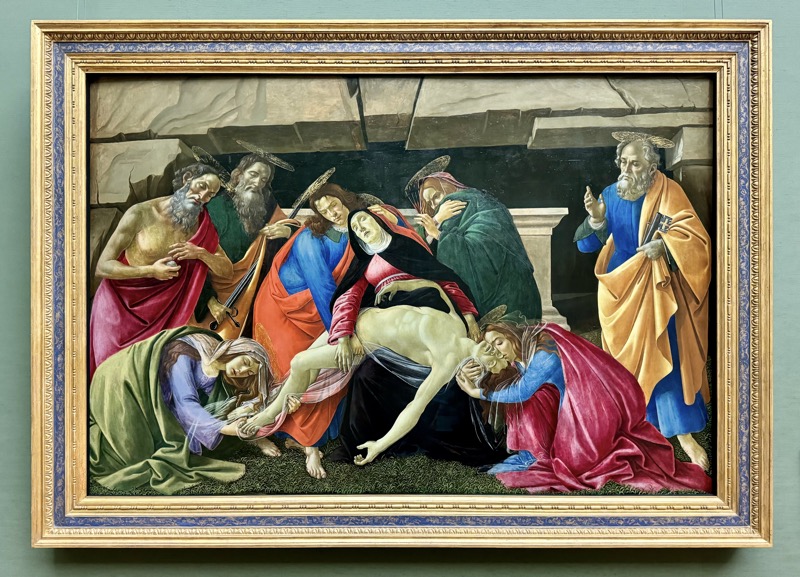
St Sebastian’s Altarpiece – Hans Holbein, 1516.
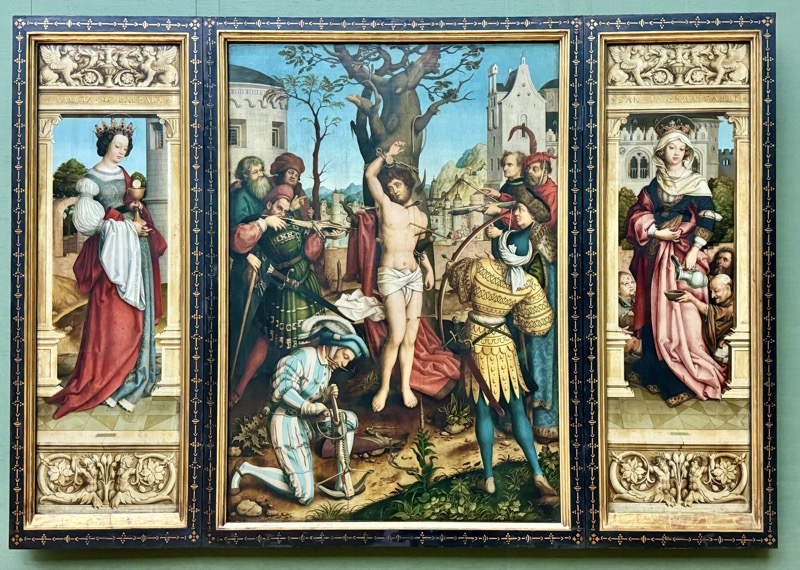
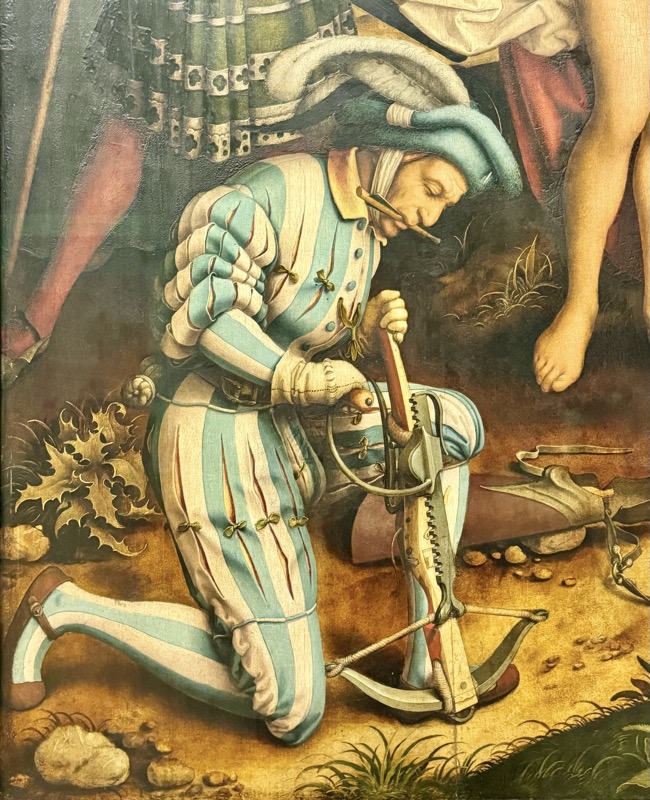
Altarpiece of the Church Fathers: St Jerome, St Gregory, St Augustine, St Ambrose.
Michael Pacher, 1480.
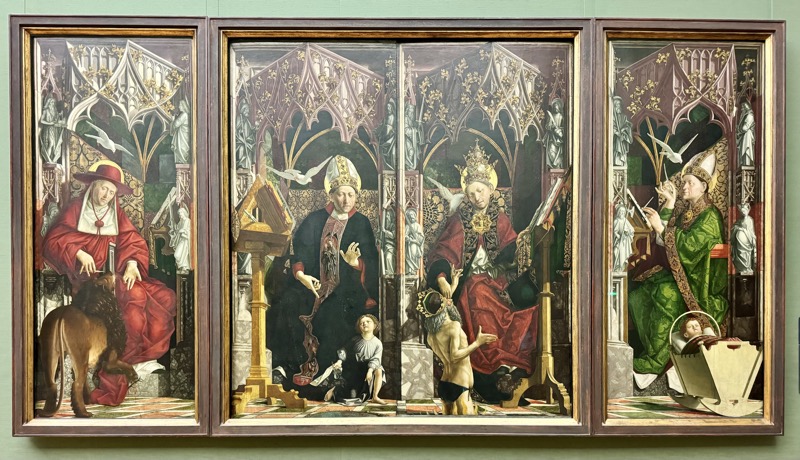
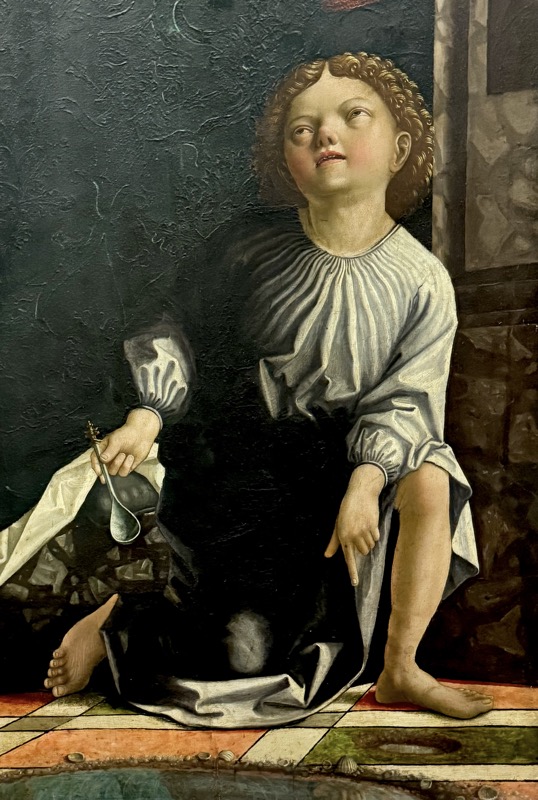
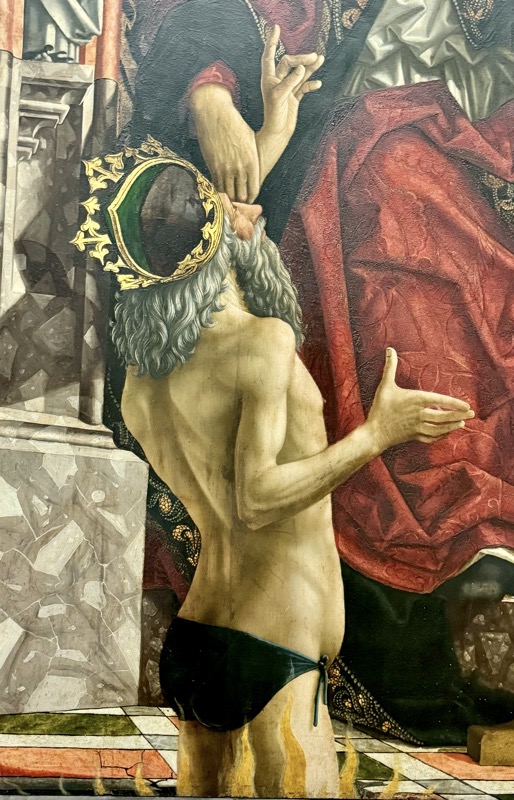
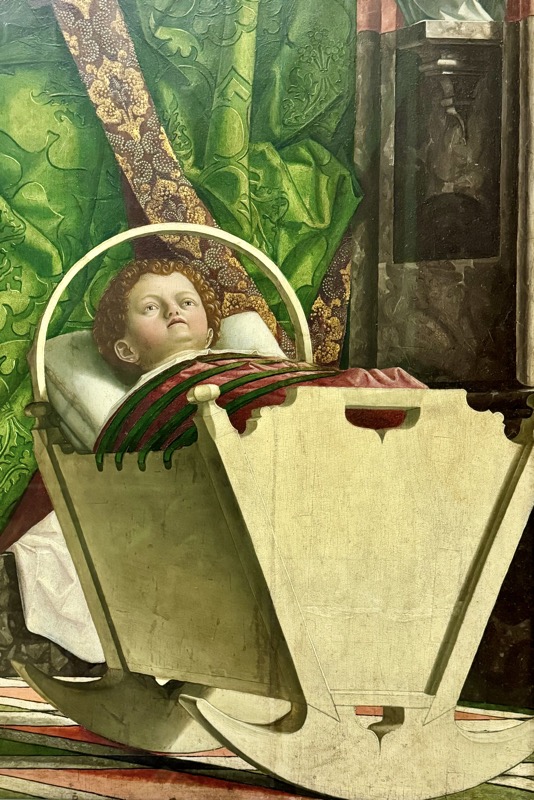
Diptych: Madonna and the Rose Bower and St Georgie with Donor – Hans Memling, c.1490.
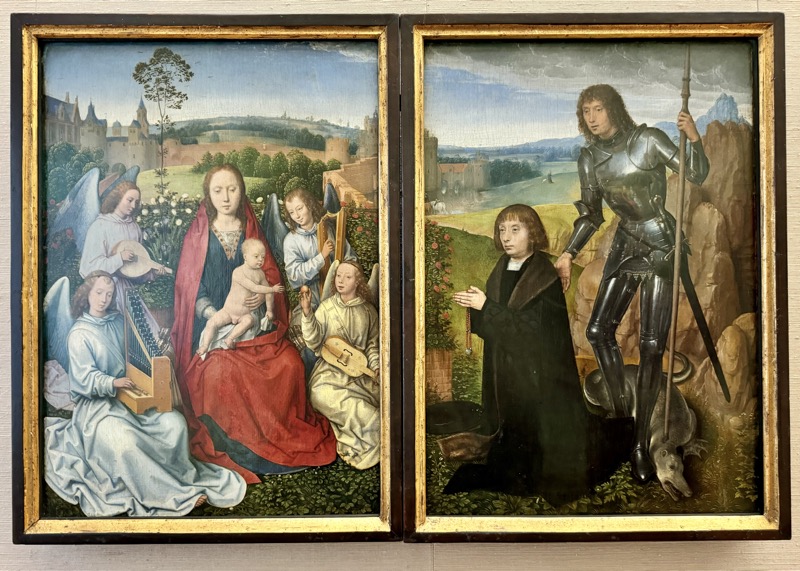
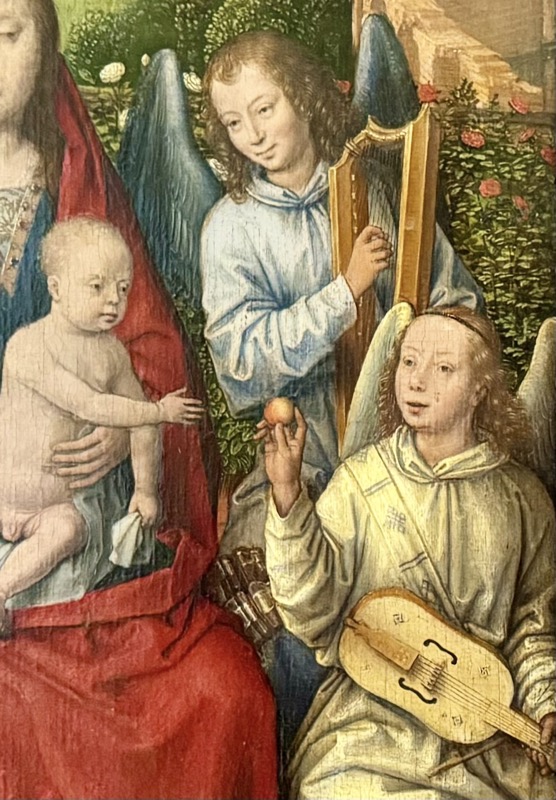
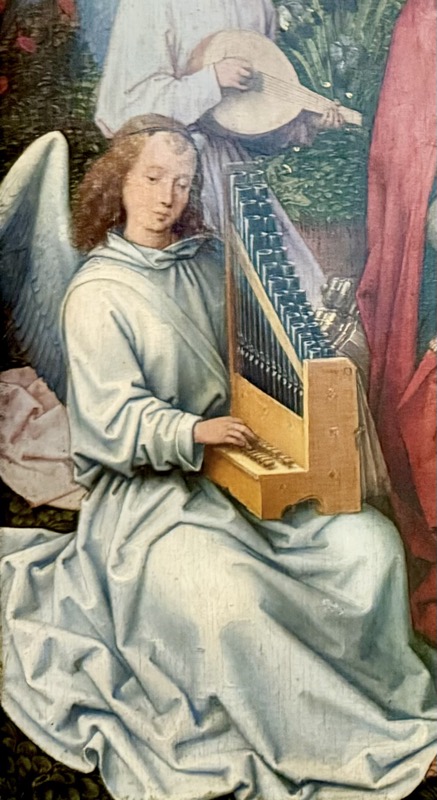
The Annunciation of Mary – Unknown artist, c.1380,
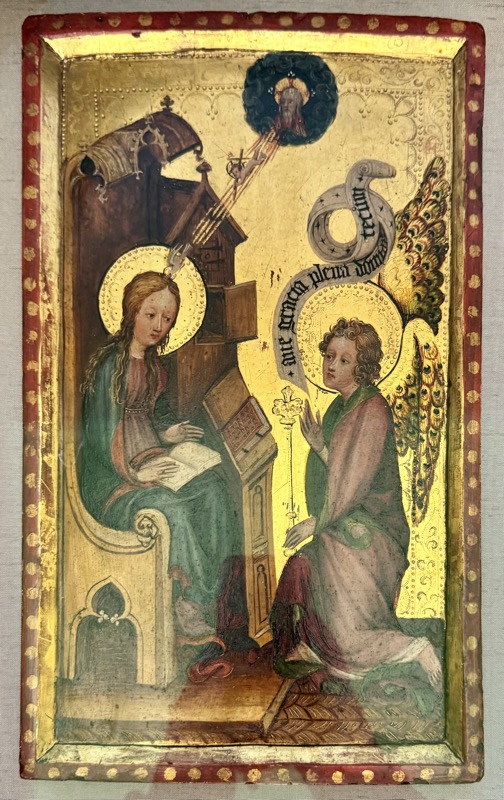
Enthroned Mary with child, the auxiliary virgins, Catherine, Agnes, Apollonia, Barbara and Angels playing music that look like swallows or even bats at at distance. Unknown artist, Cologne, c.1440.
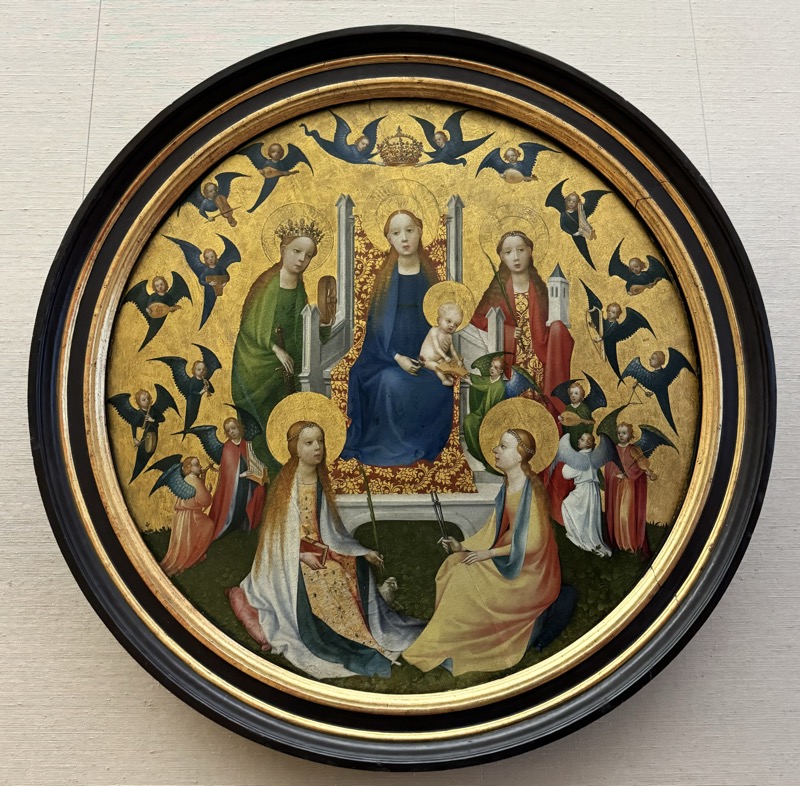
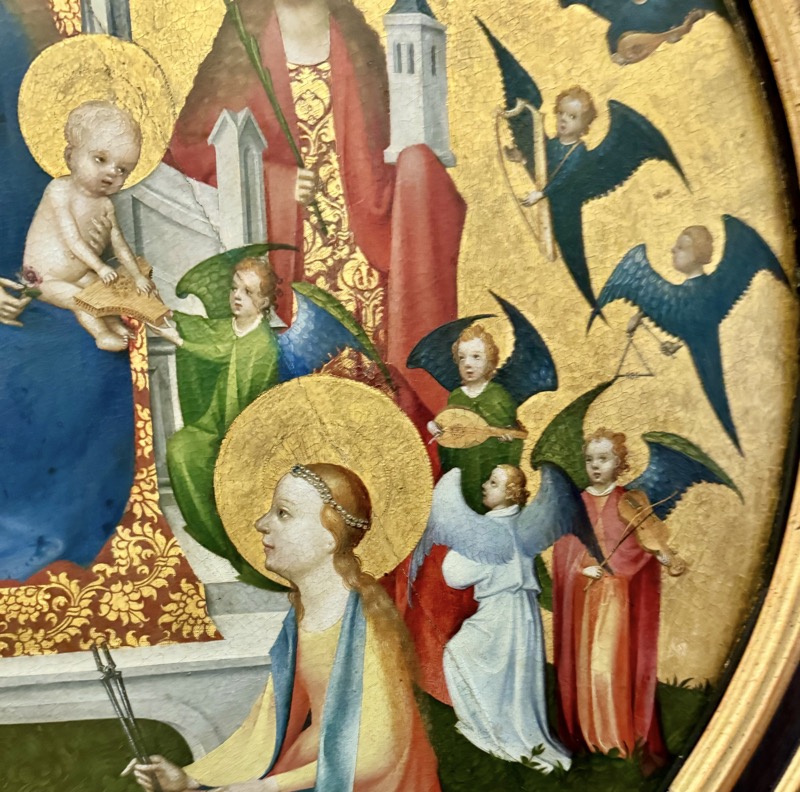
St Luke Drawing the Virgin Mary – Roger van der Weyden, c.1484.
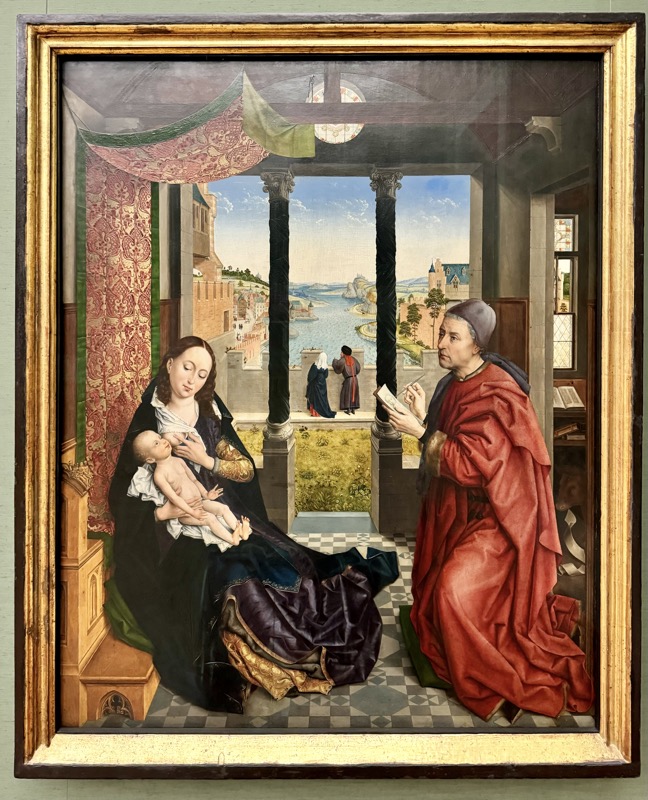
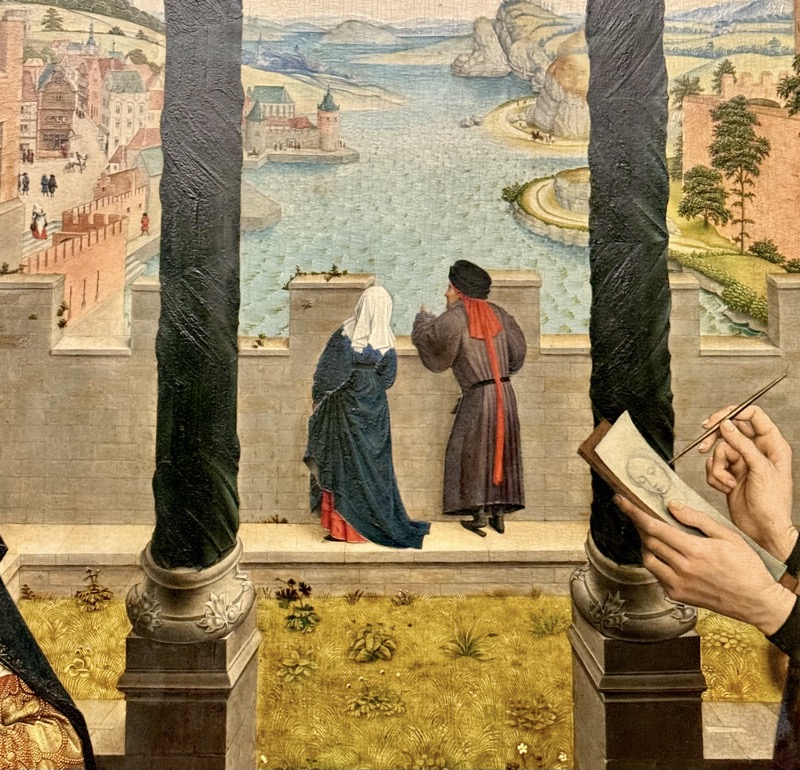
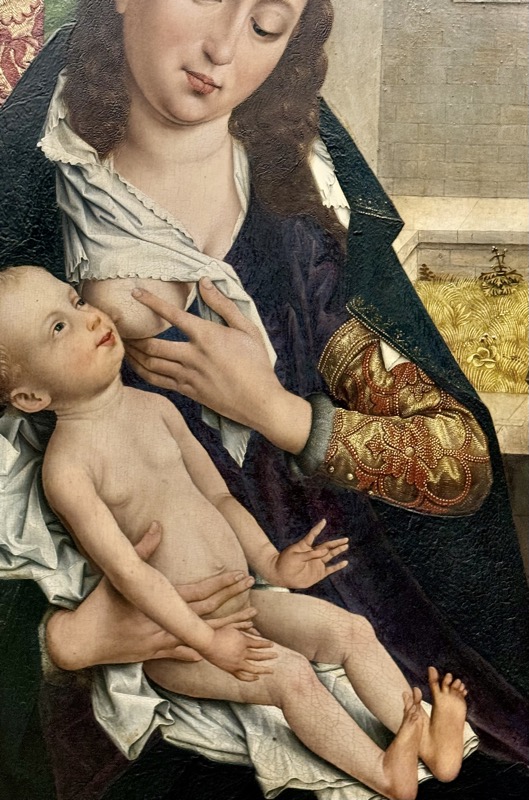
Adoration of the Kings, also known as the St Columba Altarpiece – Roger van der Weyden, 1455.
FUCKING STUNNING! These pics do not do it any justice whatsoever once they have been shrunk for the inter-webs.
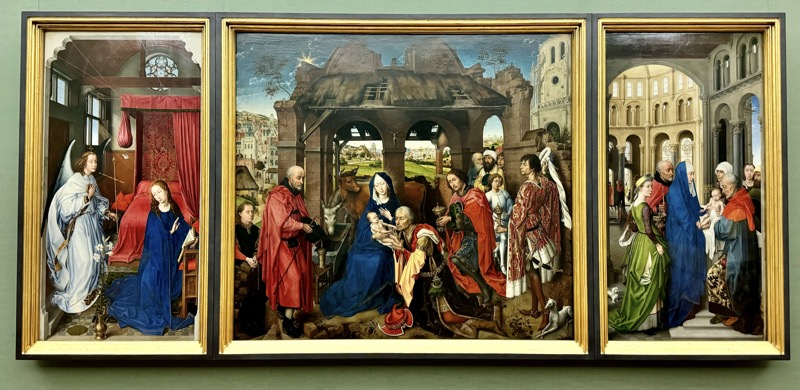
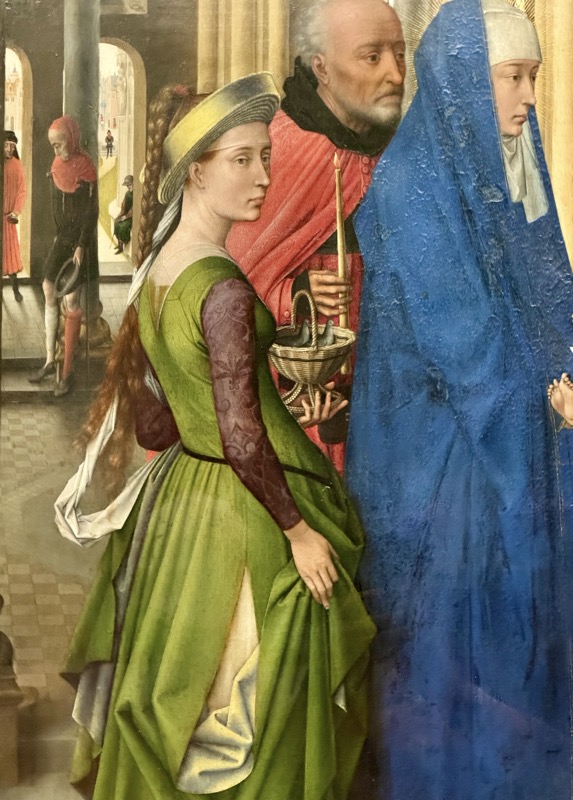
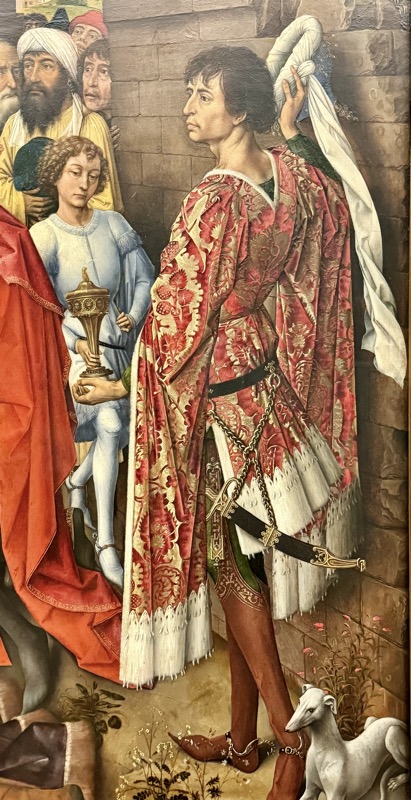
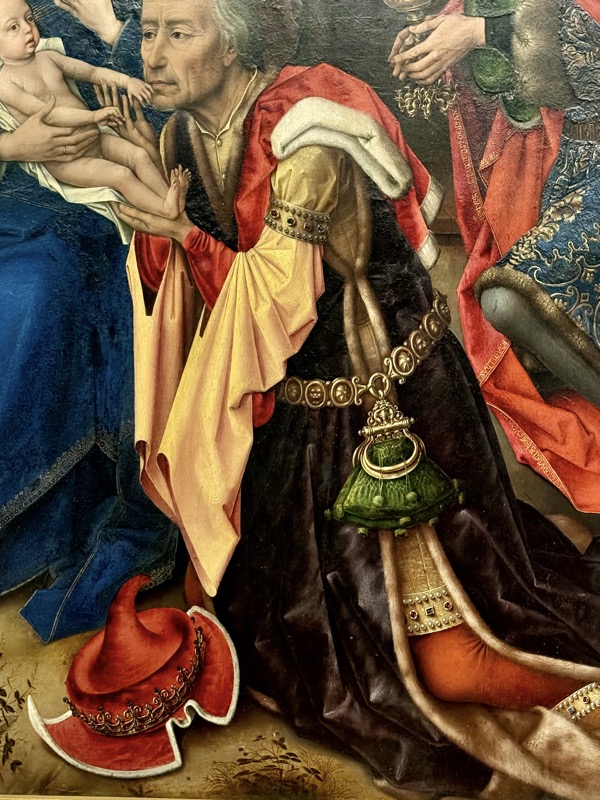
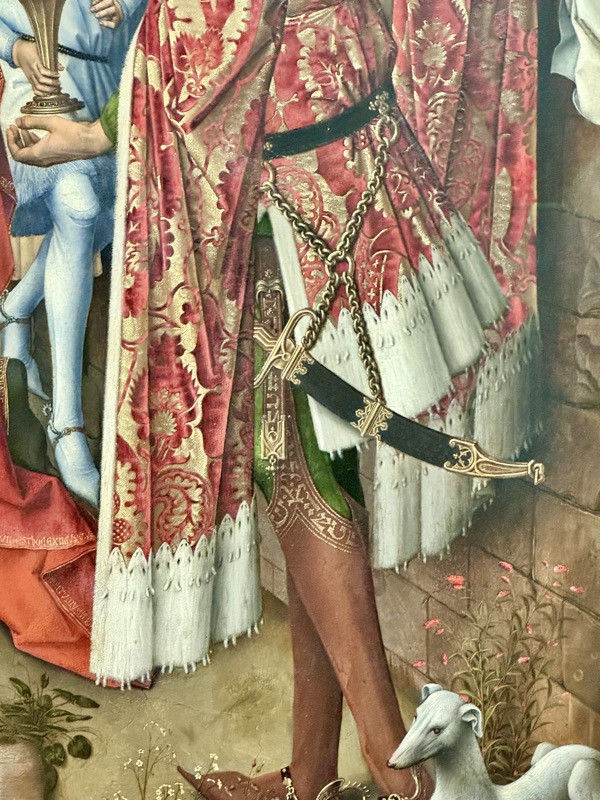
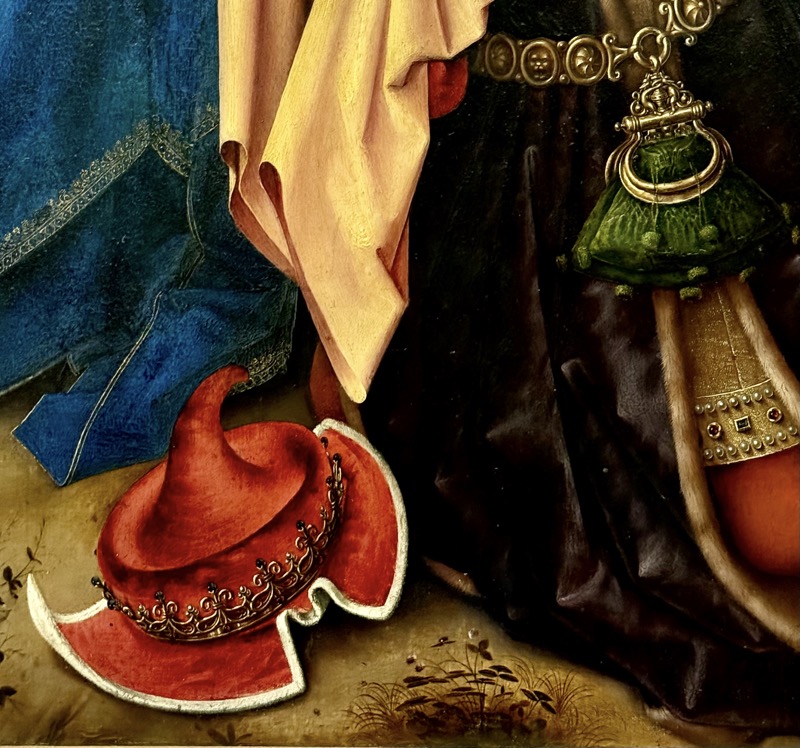
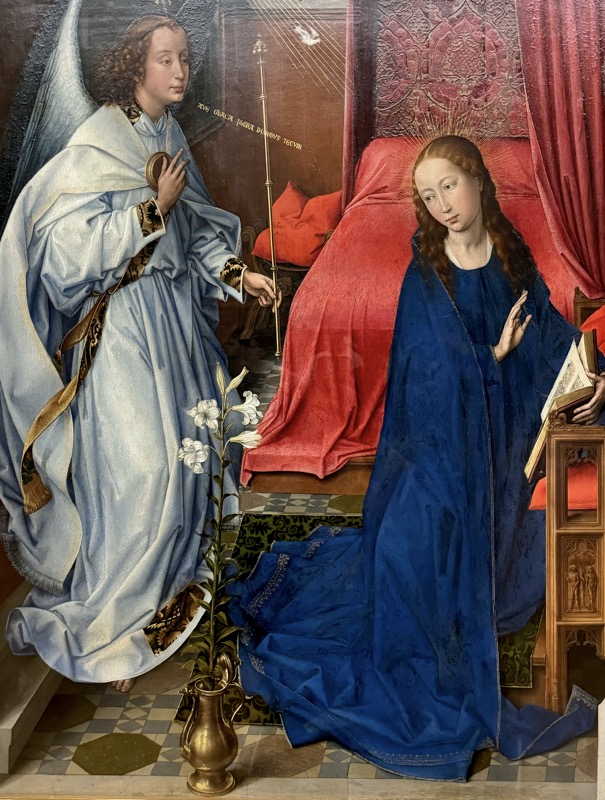
LEFT: Duke Wilhelm IV of Bavaria – Hans Wertinger, 1526.
RIGHT: Duchess Maria Jacobea of Baden – Hans Wertinger, 1526.
Marraige alliance portraits, with details of her frock because it’s fabulous! Beadwork lettering across her bodice reads: ‘A BON FINE’ (to a good end!).
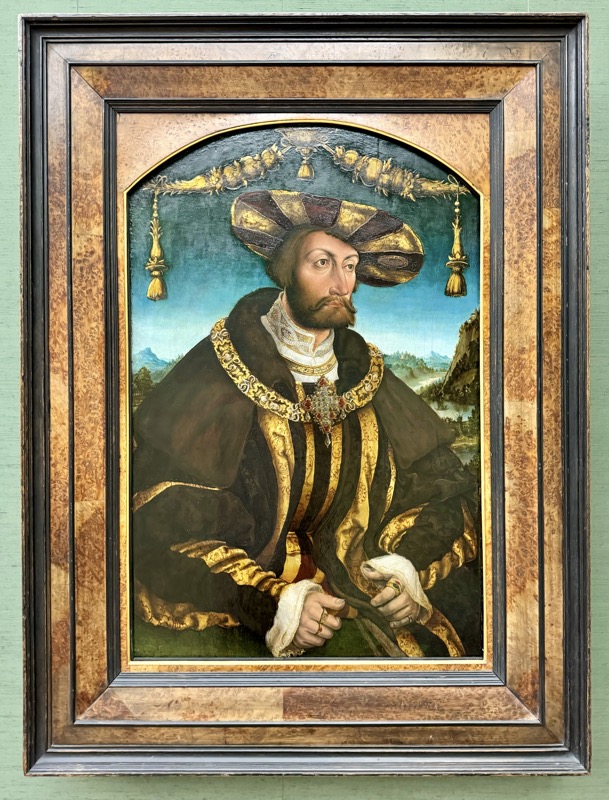
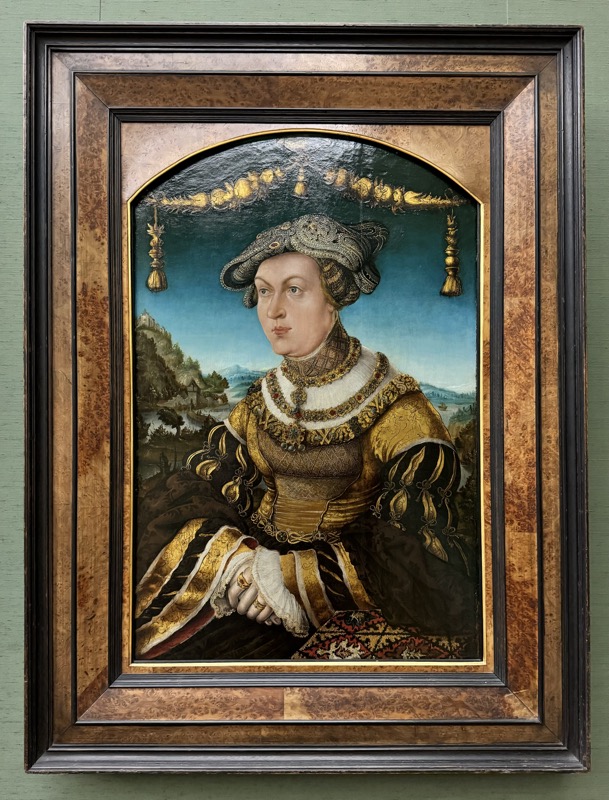
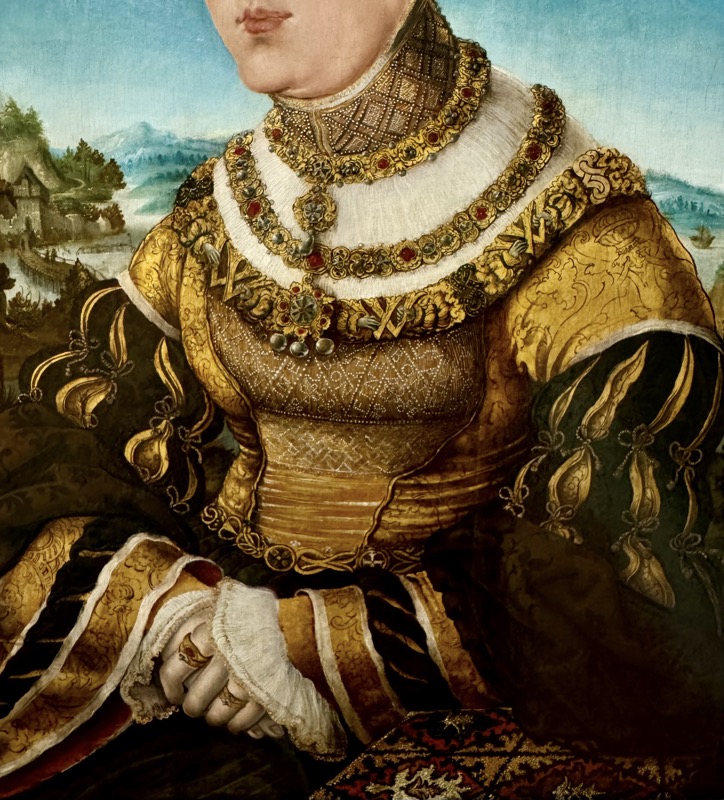
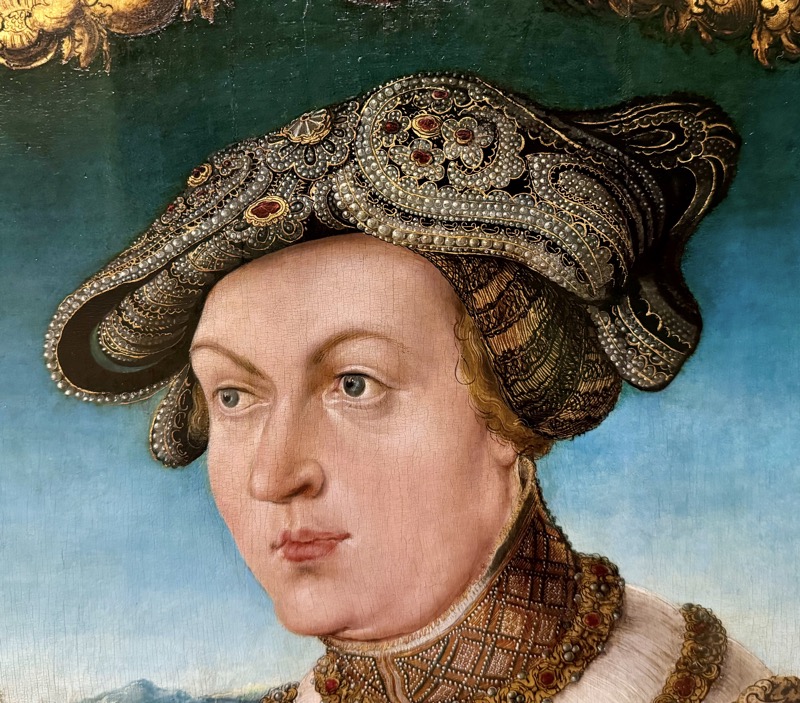
Portrait of Oswolkt Krel – Albrecht Dürer, 1499… yes! The real Oswolkt, not the copy at the AD Musuem.
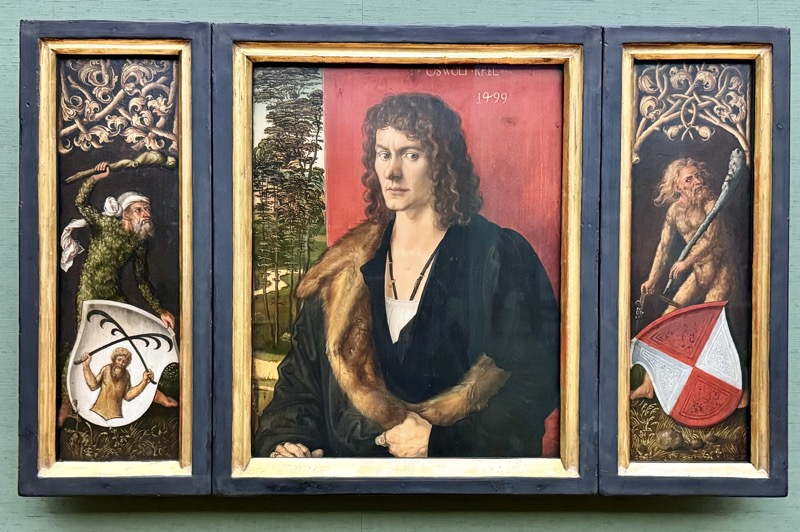
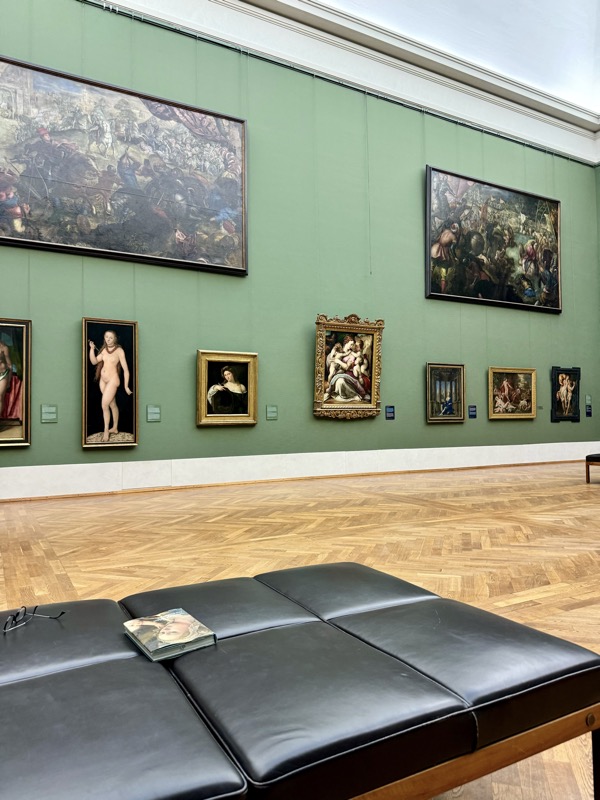
Self-Portrait with Fur Trimmed Robe – Albrecht Dürer, c.1500.
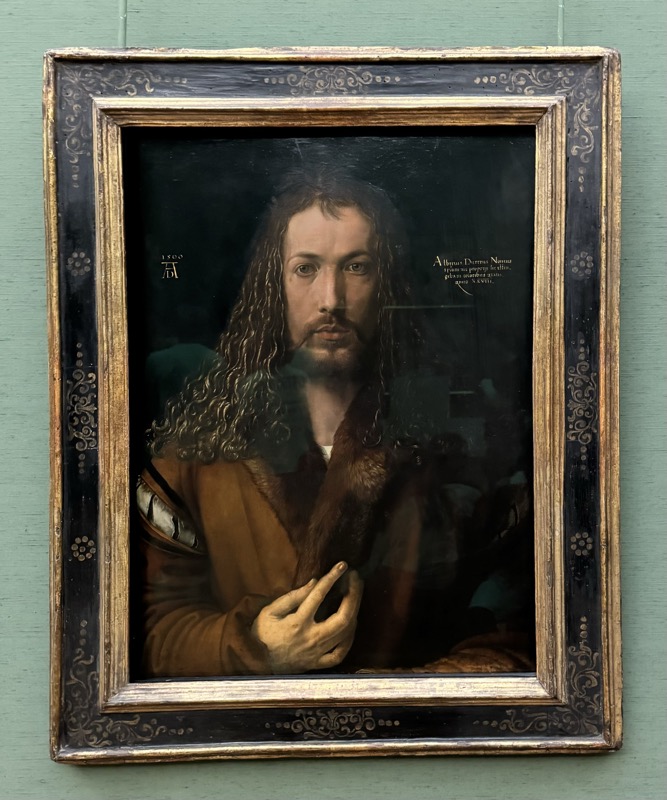
The Battle of Alexander at Issus – Albrecht Aldorfer, c.1529.
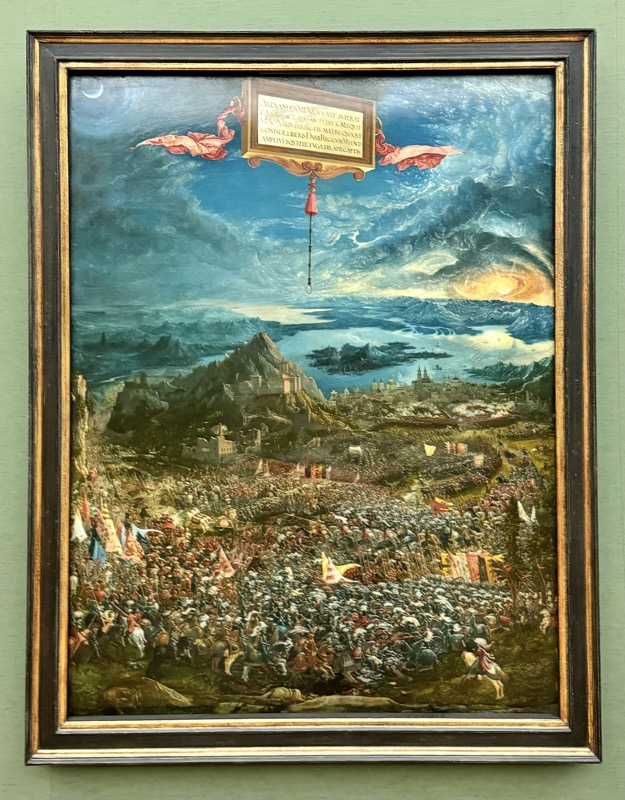
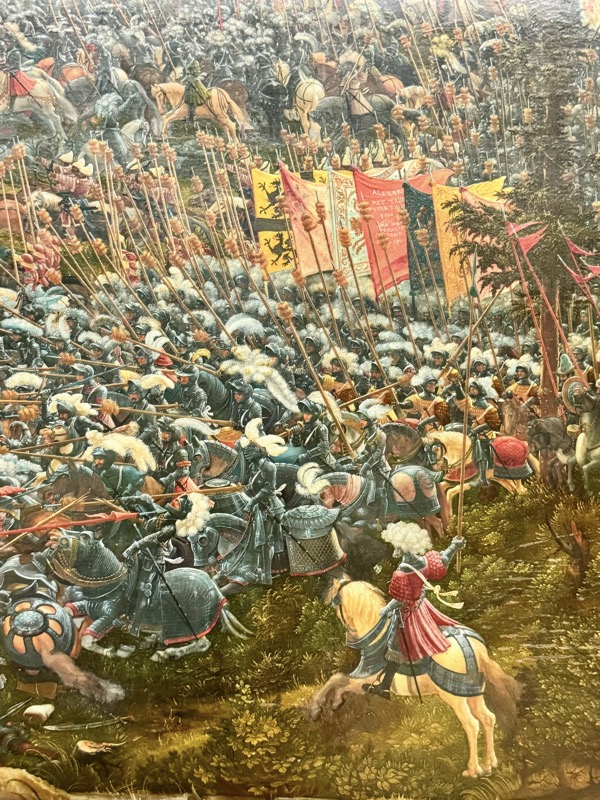
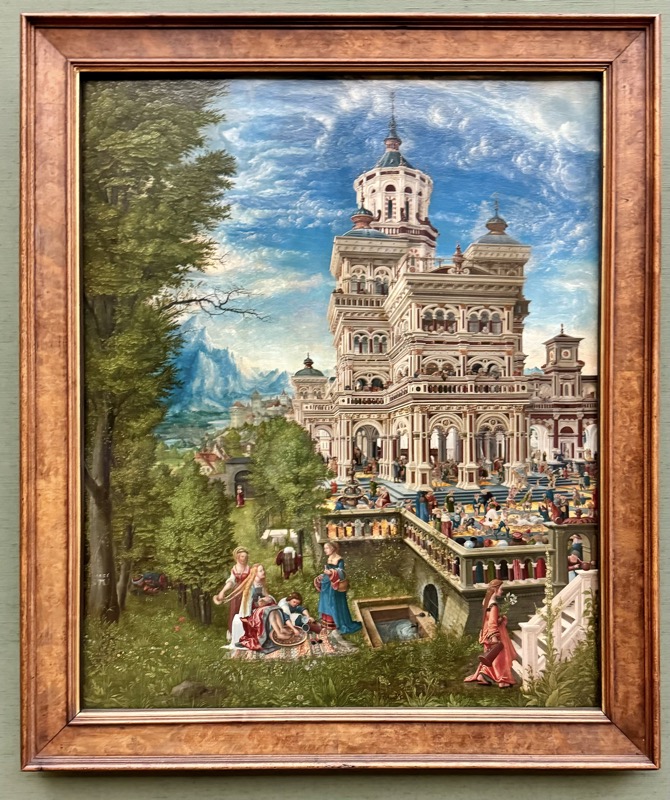
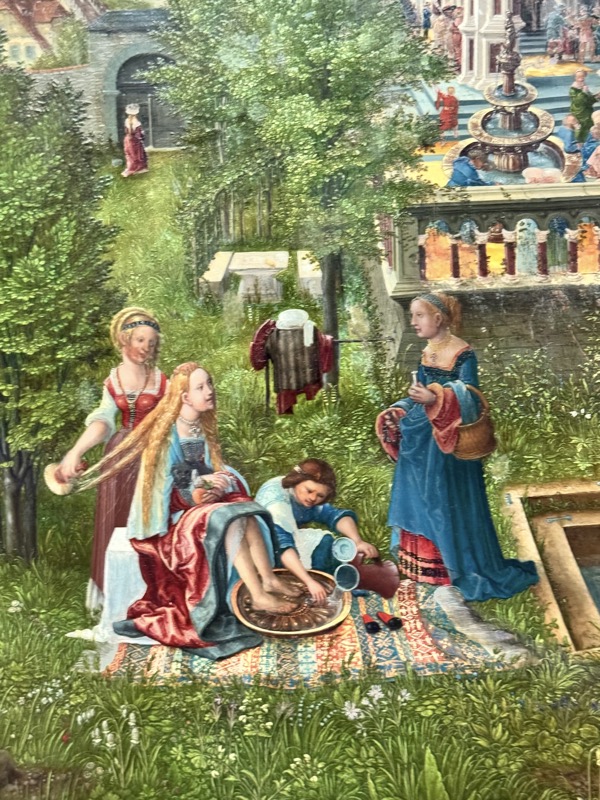
This is a gorgeous art gallery stuffed full of so many important and beautiful paintings!
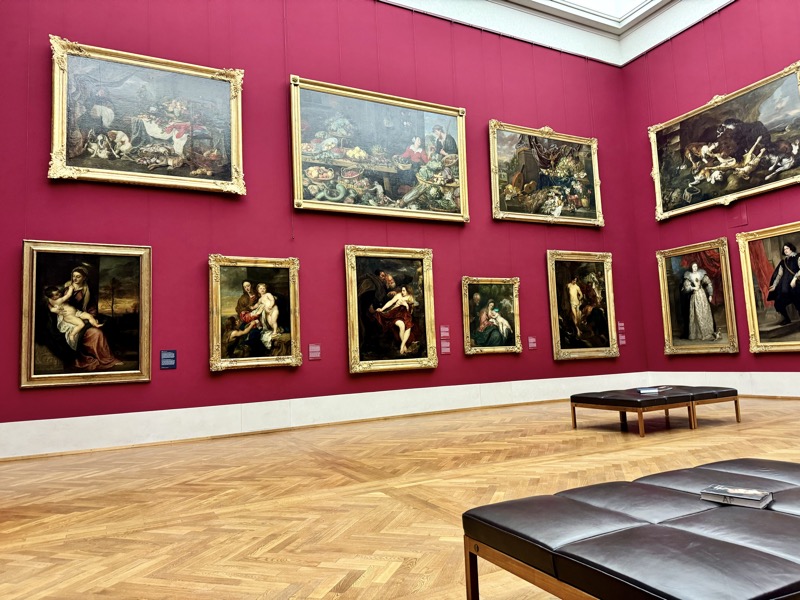
The Crowing of the Virtuous Hero – Peter Paul Rubens, c.1613/14,
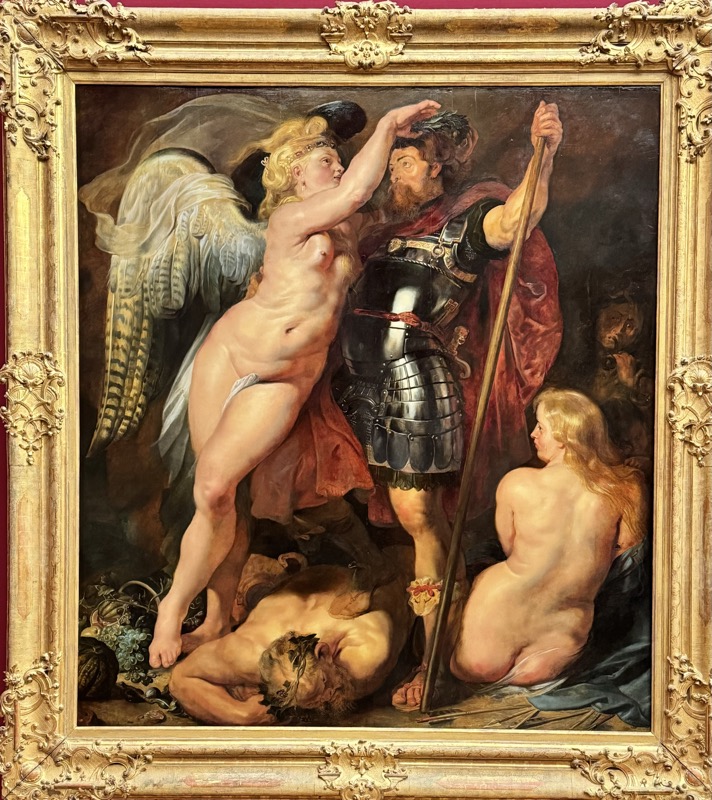
The Rape of the Daughters of Leucippus – Peter Paul Rubens, c.1618.
“The abduction of the king’s daughters came to a deadly end when Castor und Pollux were killed during the pursuit. Although twins, they were the offspring of two different fathers. Castor was the son of Tyndareus, the King of Sparta, and therefore mortal; this was not the case with Pollux, the son of Jupiter. When Pollux asked not to be separated from his brother, both were transformed into celestial bodies. Through the complex composition that suggests a number of different views and the sensual rendering of textures Rubens demonstrates the superiority of painting over sculpture.”
This image feels a bit problematic to me… while those women look like they are being ‘ravished’ they don’t look like they’re fighting too hard, and the wee little cherub looking on innocently seems unconcerned and nonchalant. If it weren’t for the title and the blurb, you could mistake it for an unenthusiastic and ill-located orgy.
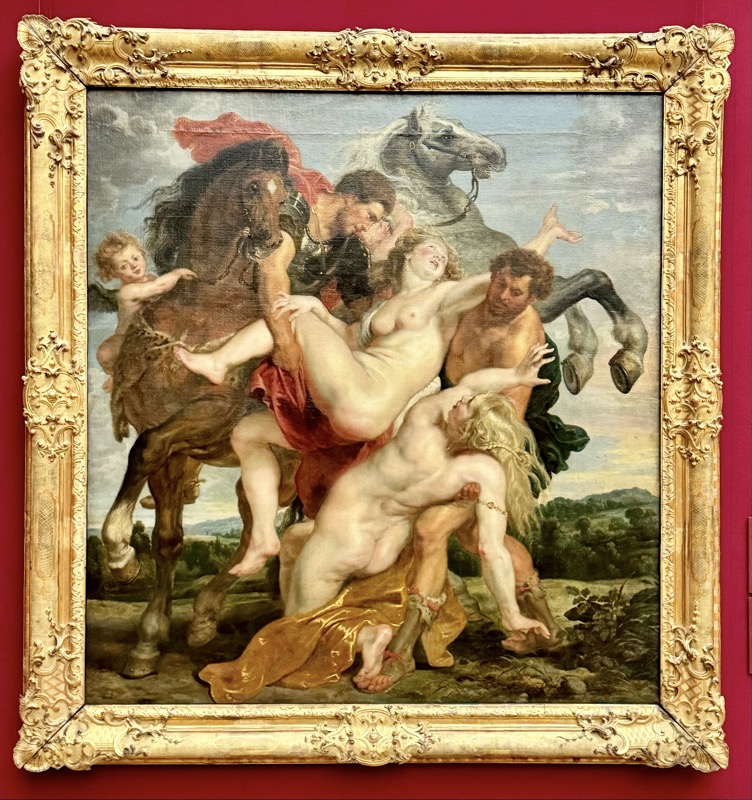
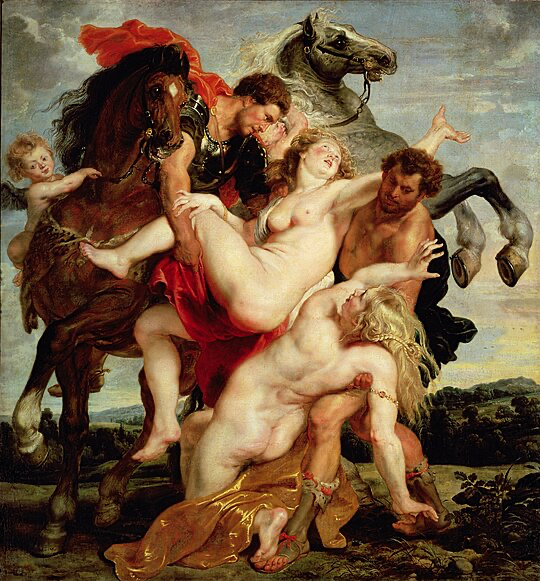
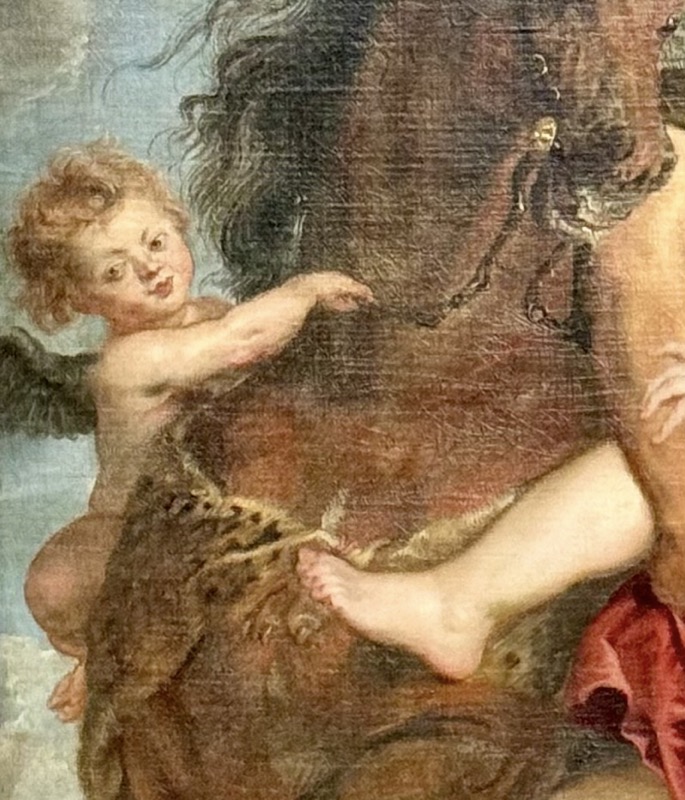
Madame de Pompadour – François Boucher, 1756
Official mistress of Louis XV of France, she is presented here in an elaborate tea dress surrounded by books and correspondence alluding to her political influence at court.
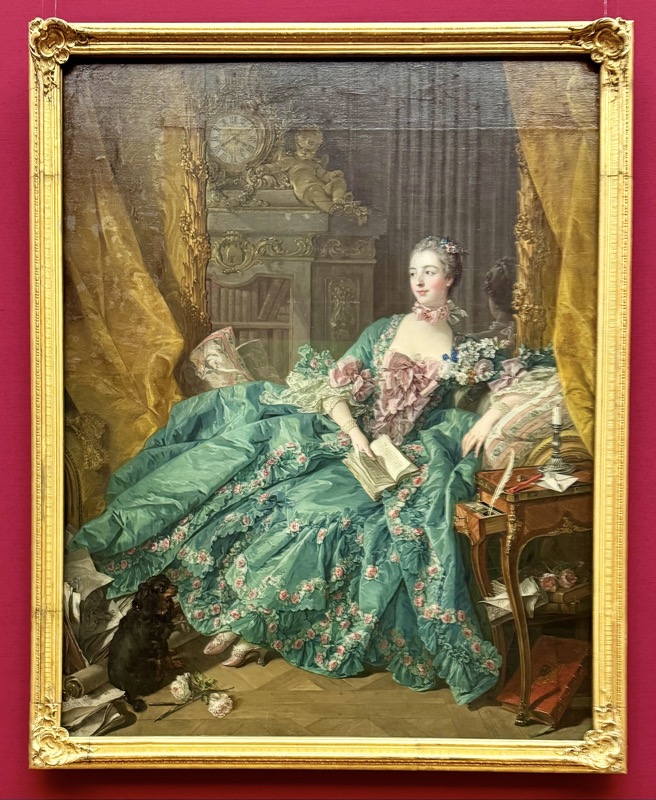
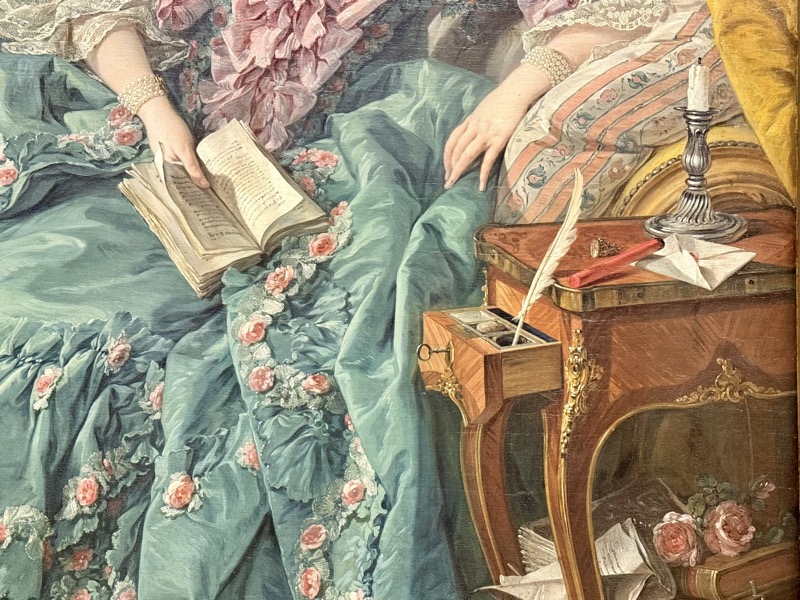
The Land of Cockaigne – Pieter Bruegel, 1567.
Fabulous theme of the sins of idleness and gluttony/lethargy and surrendering to vice and how it pervades all social classes – the soldier, the peasant, and the learned man.
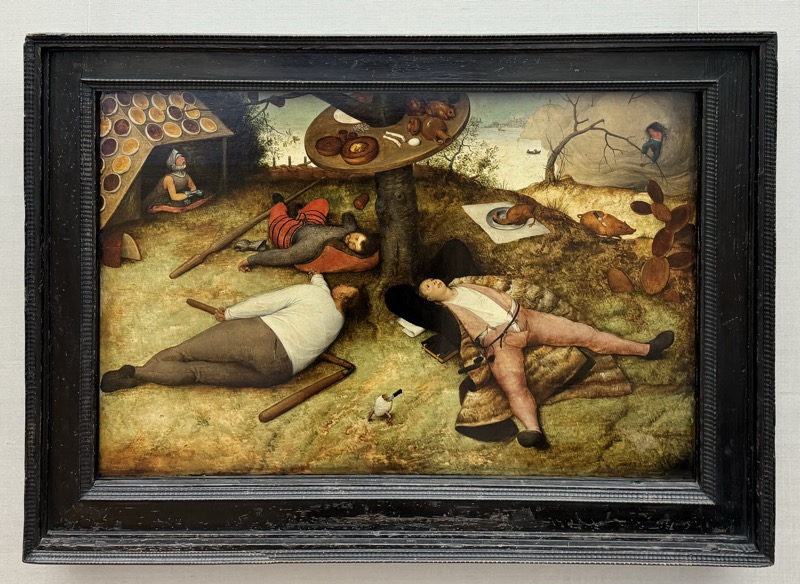
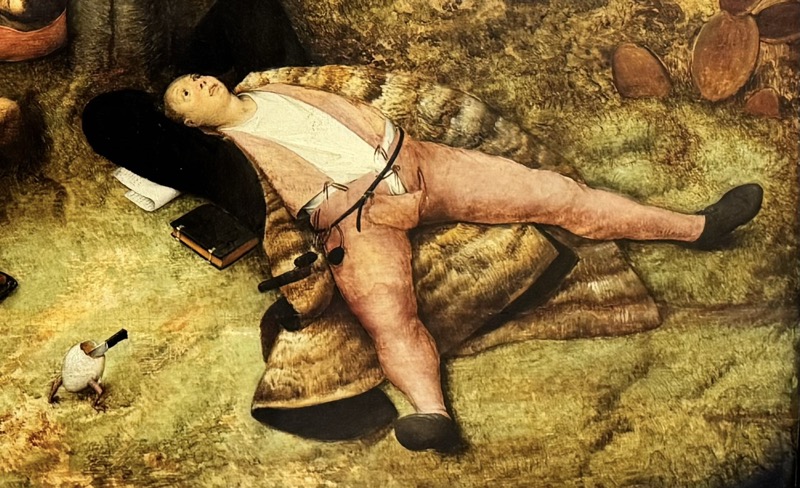
Twins of 33 Weeks – Aelbert Cuyp, c. 1625/49… is there something wrong with these kids? 🙂
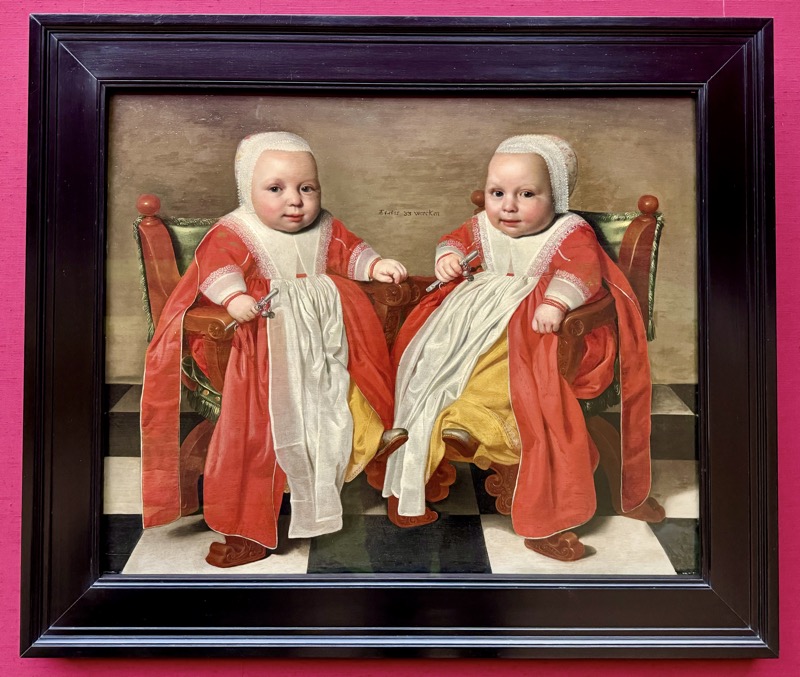
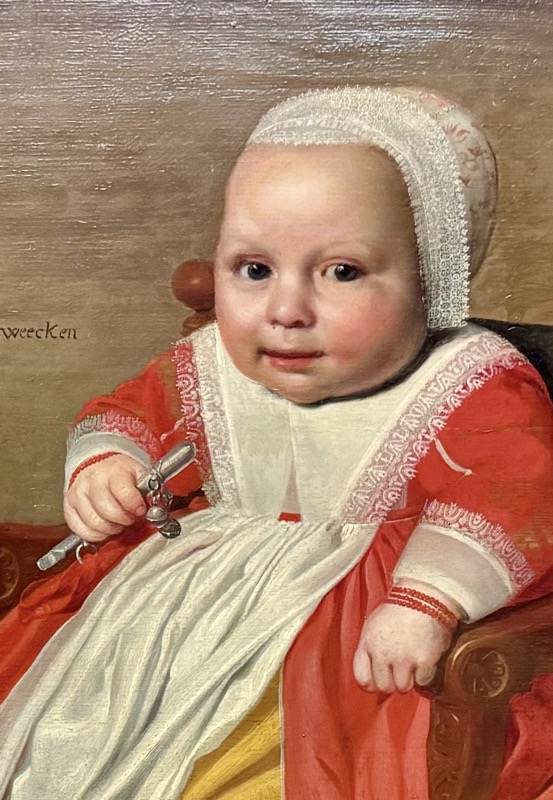
Head of an Old Peasant Woman – Pieter Bruegel, c.1563.
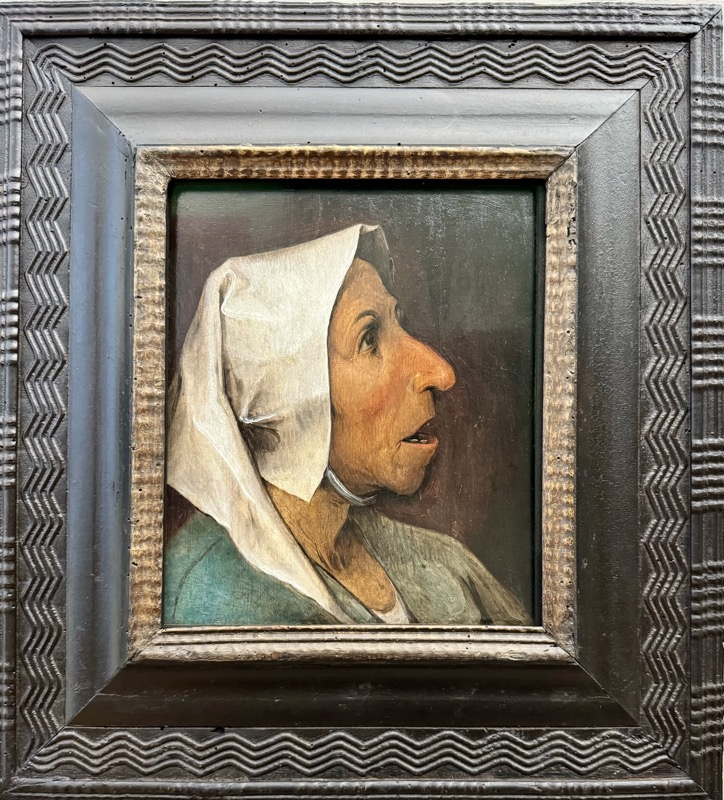
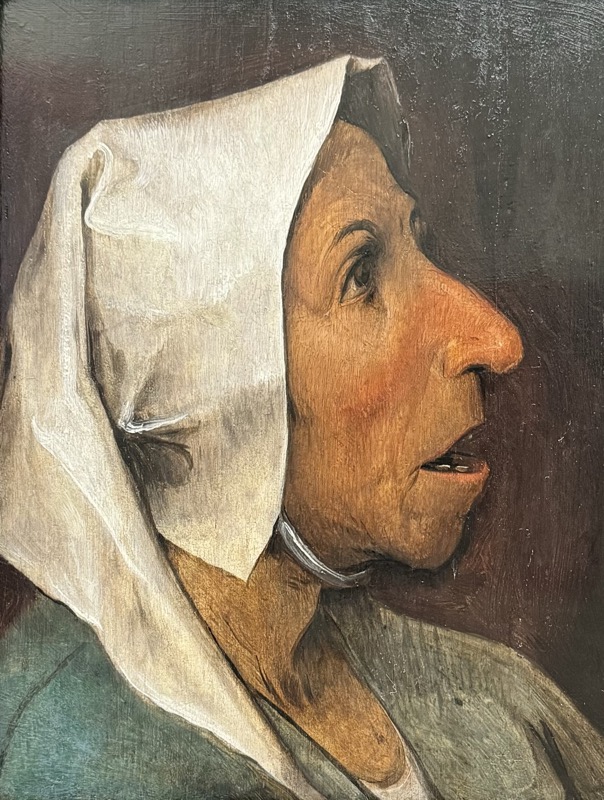
Italia and Germnania – Friedrich Overbeck, c. 1828
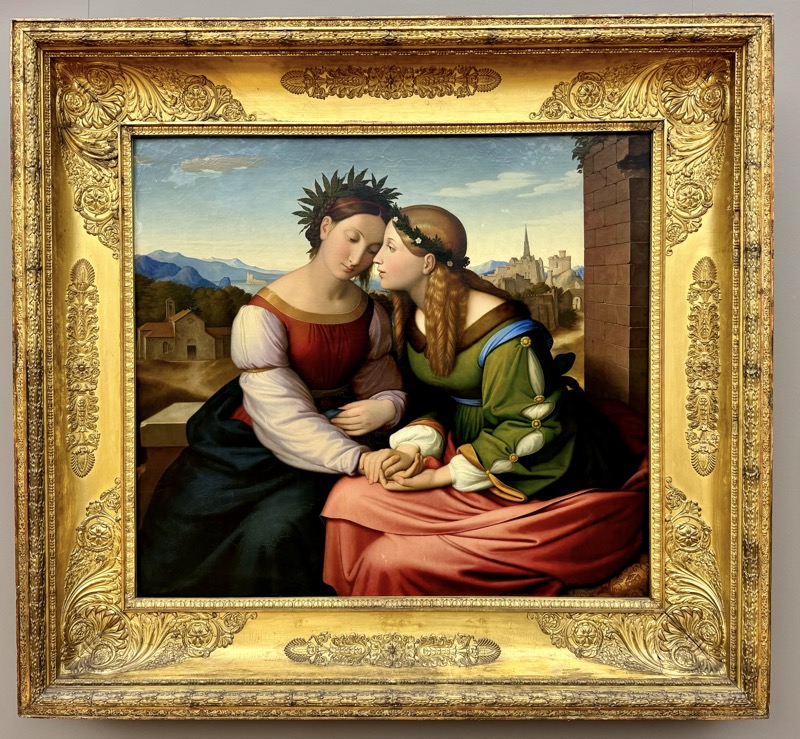
I thought I would finish up on this image… because I can totally feel this woman!
Vittoria Caldoni – Friedrich Overbeck, c. 1821.
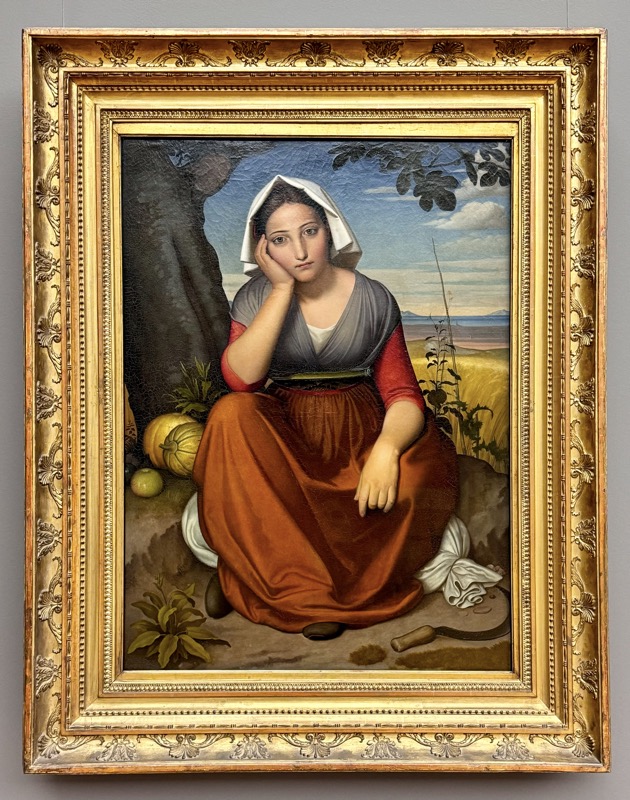
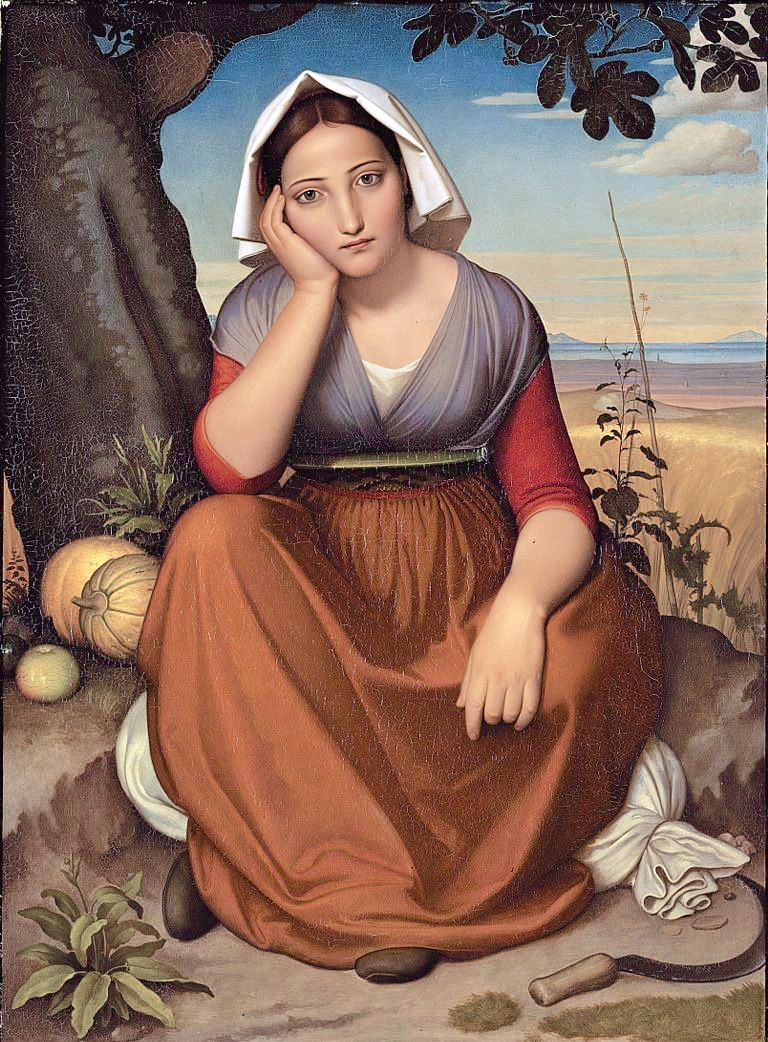
Well, what an amazing museum! Chock full of gorgeous pieces and some truly iconic pieces of Northern Renaissance art. I have always regretted not seeing it years ago, but to be honest, I think I probably got much more out of it seeing it now with a couple of more decades of art history knowledge under my belt.
